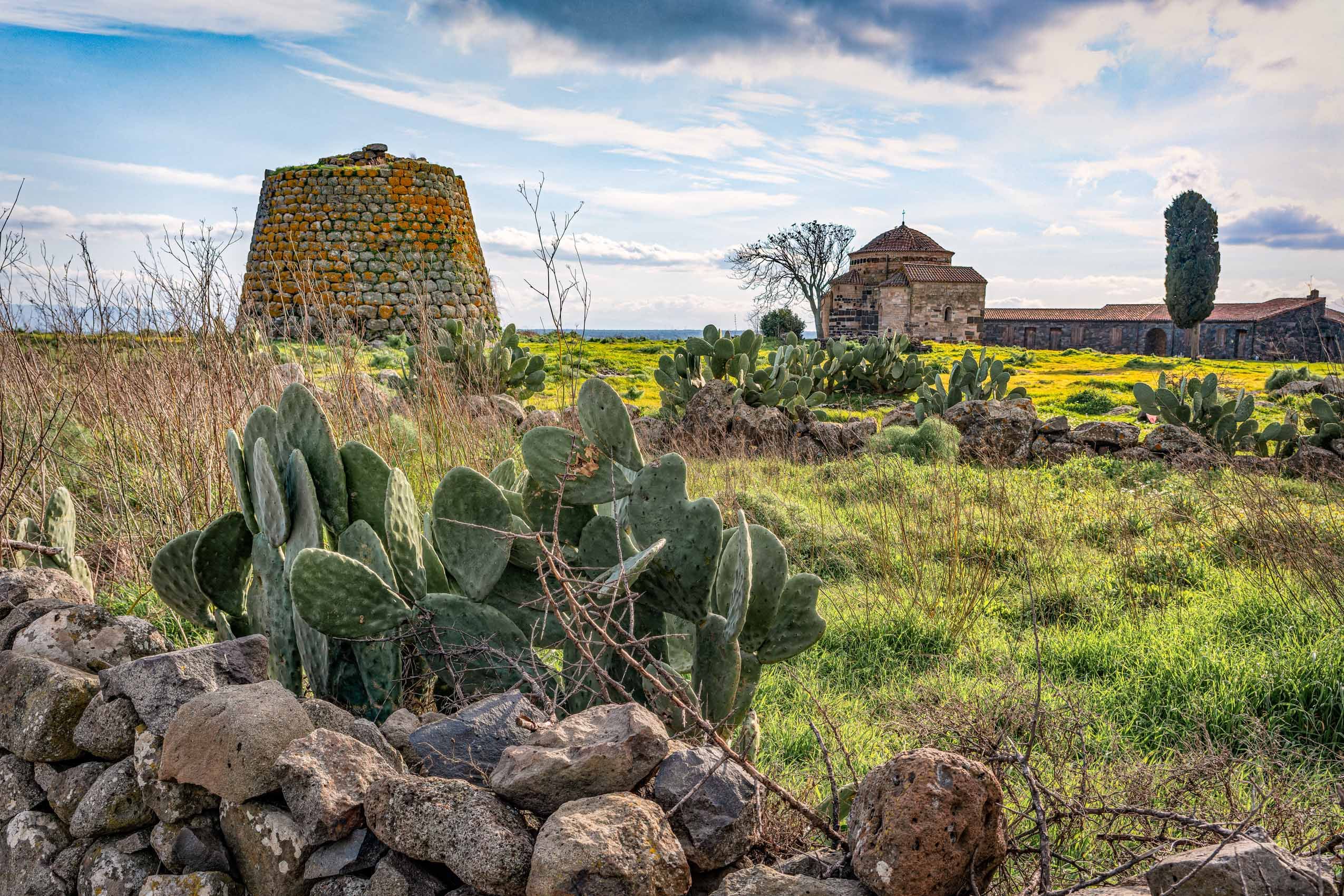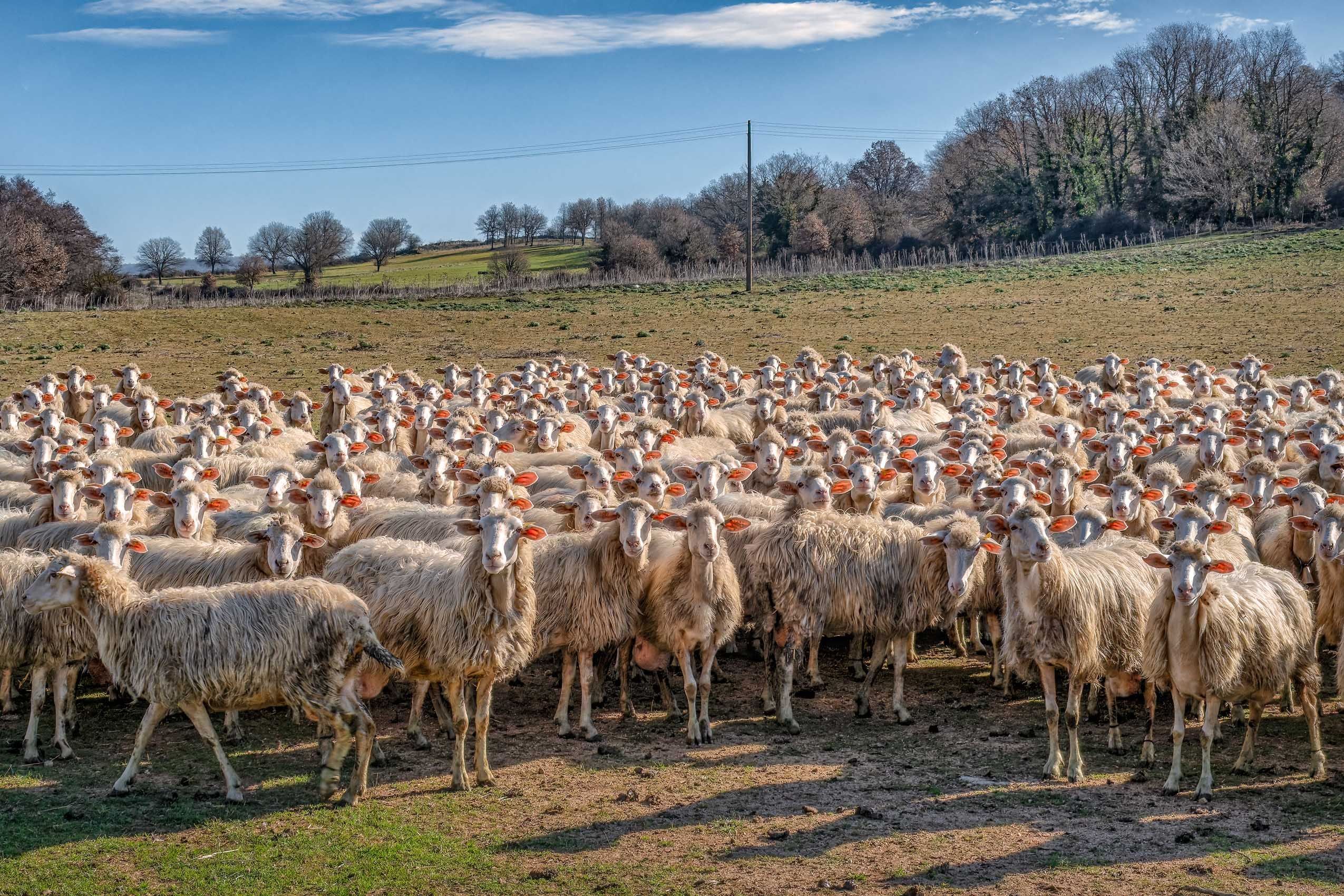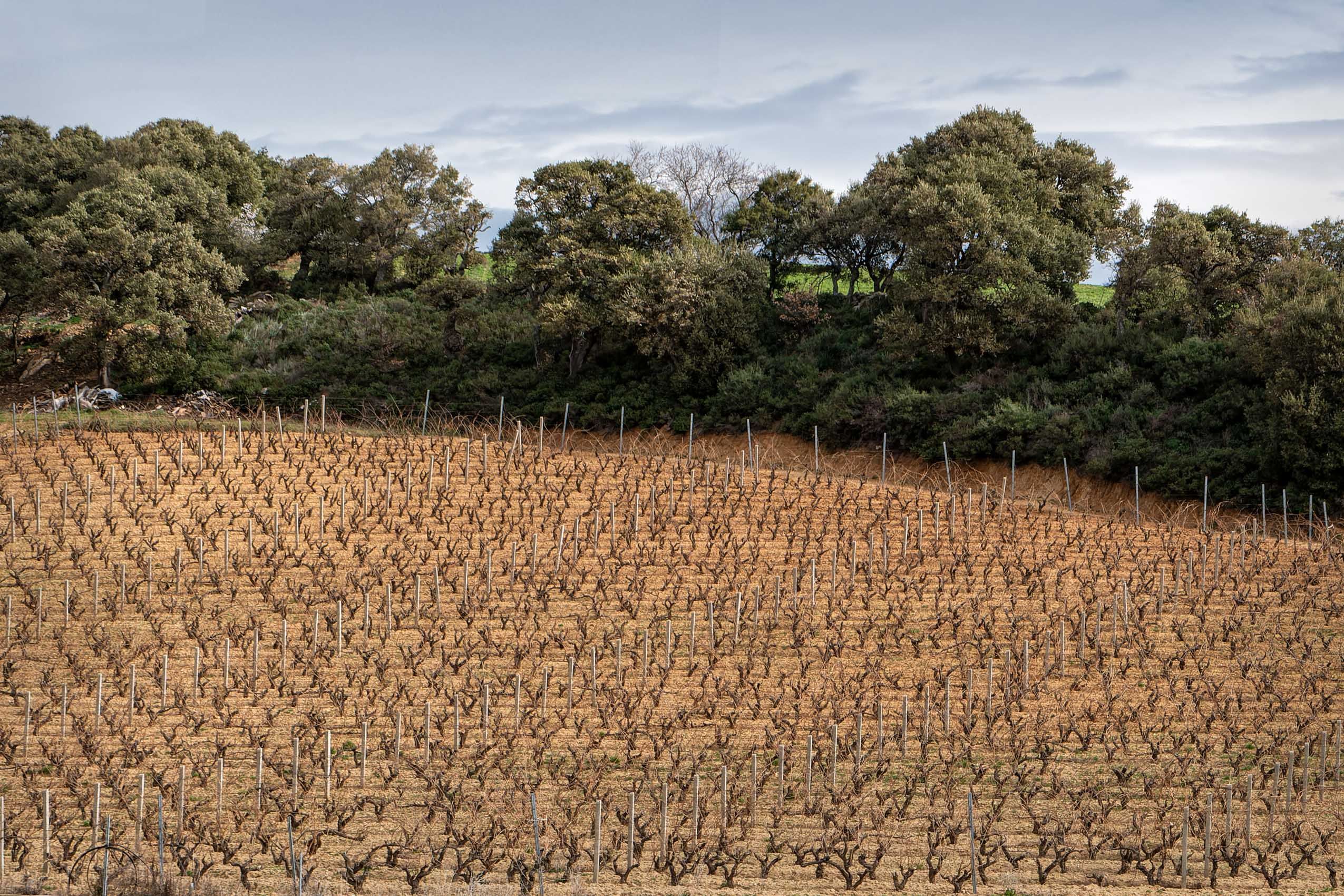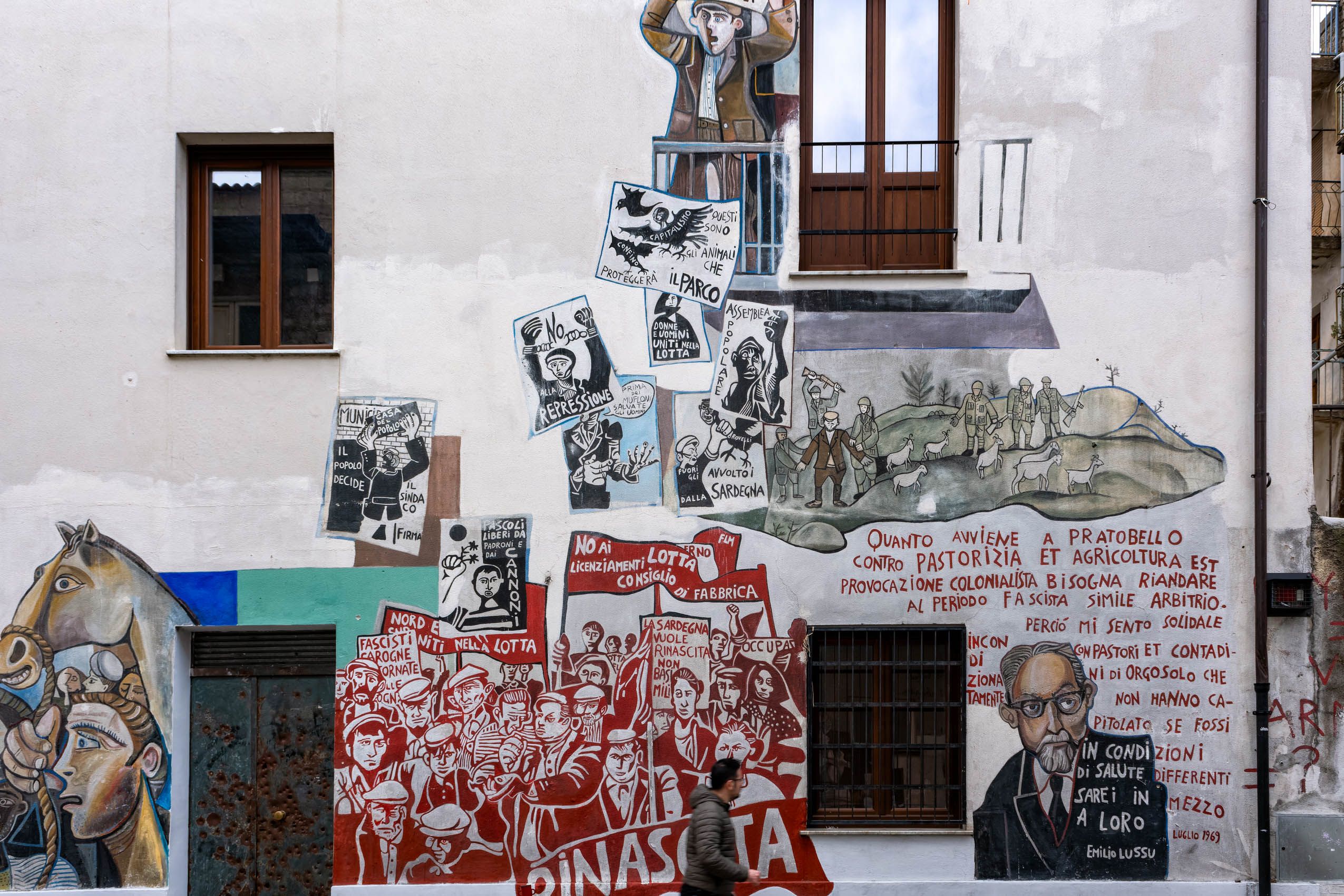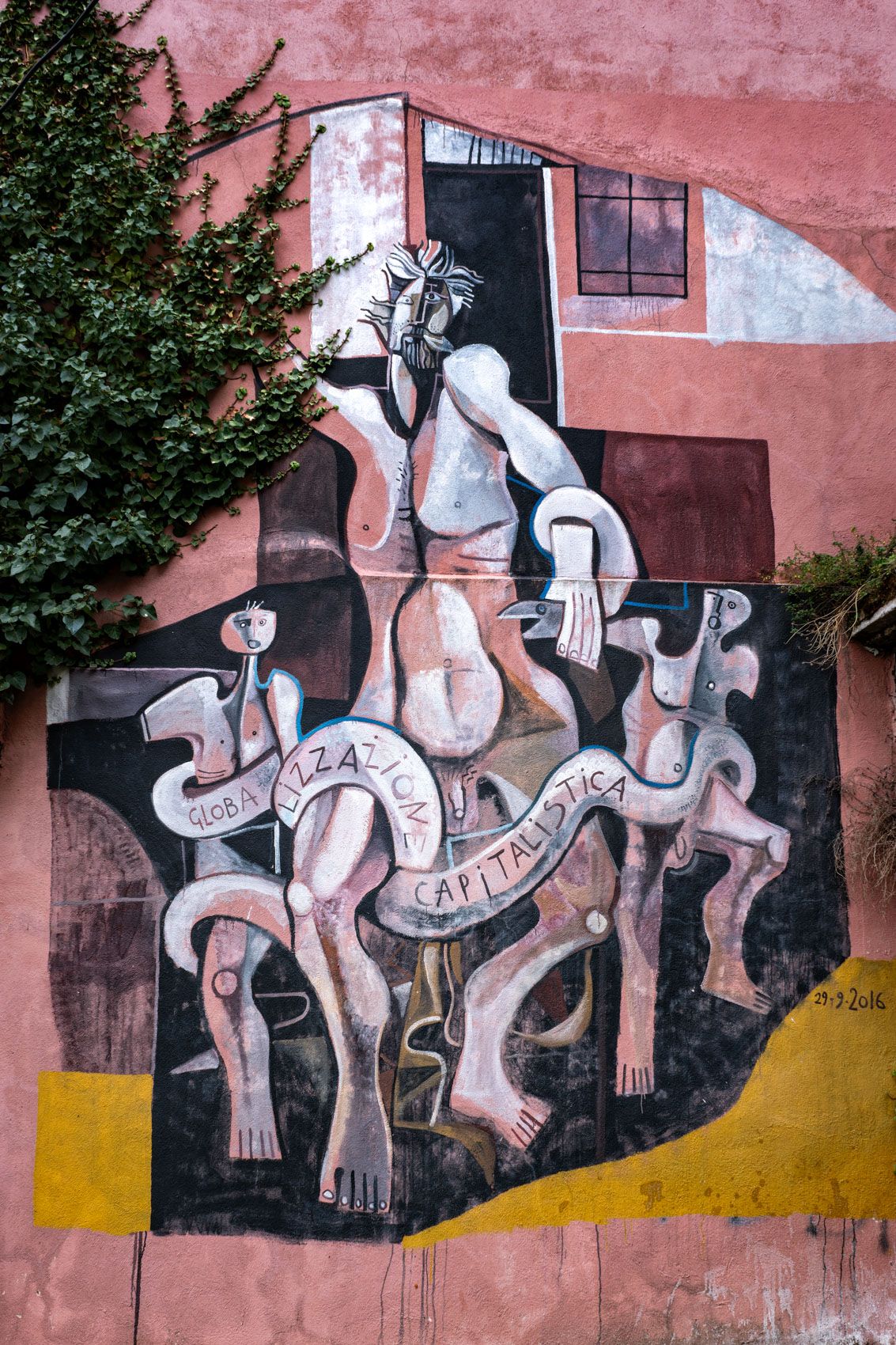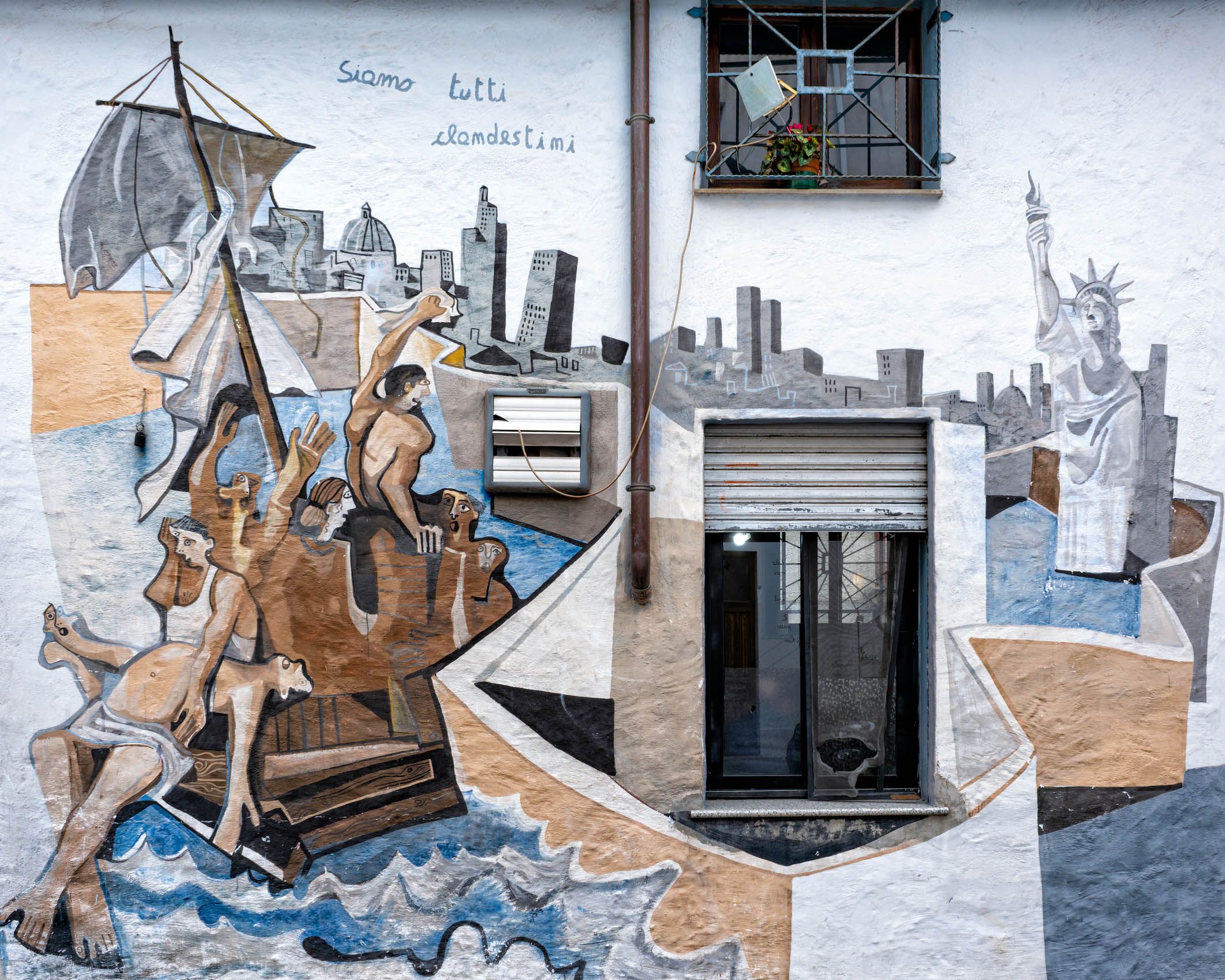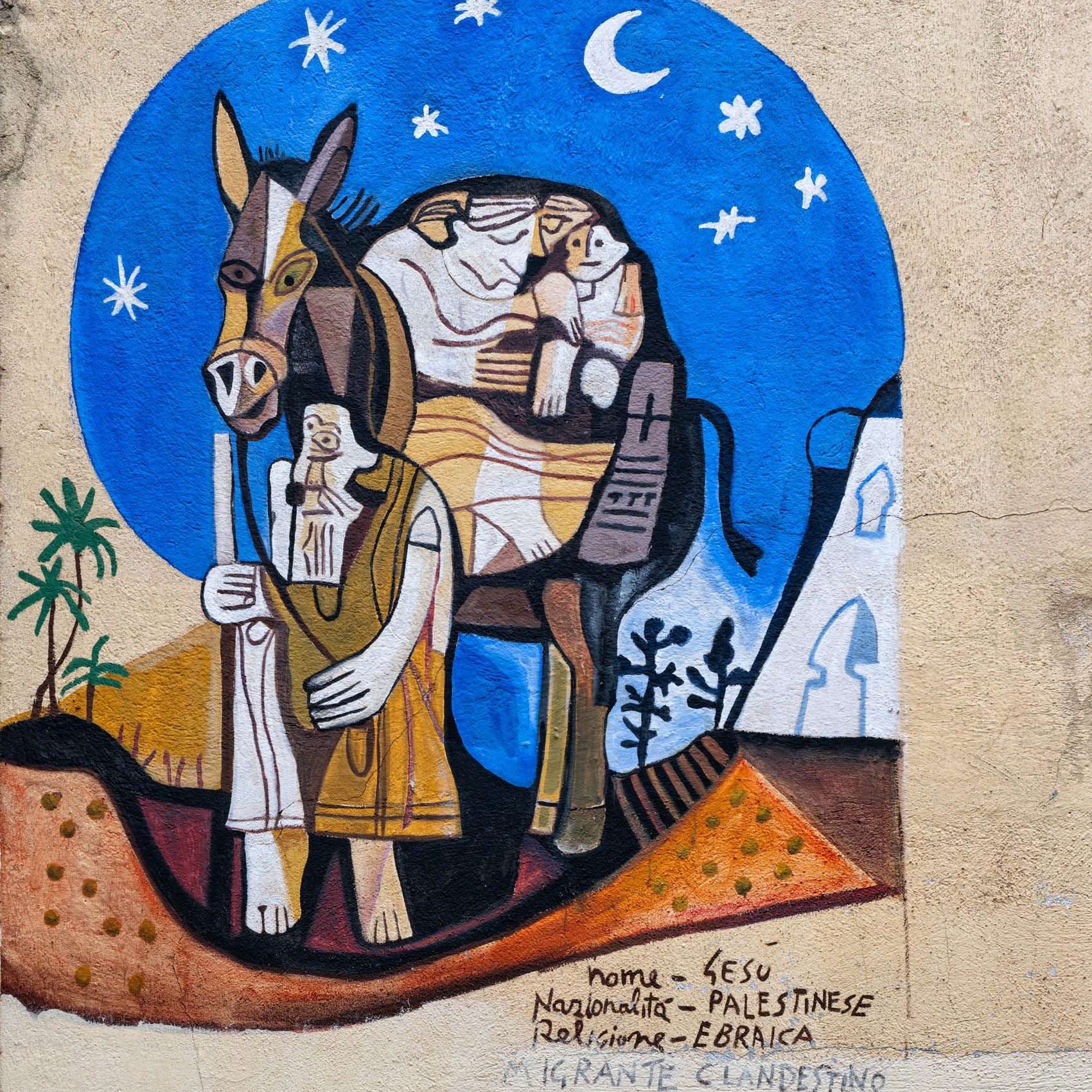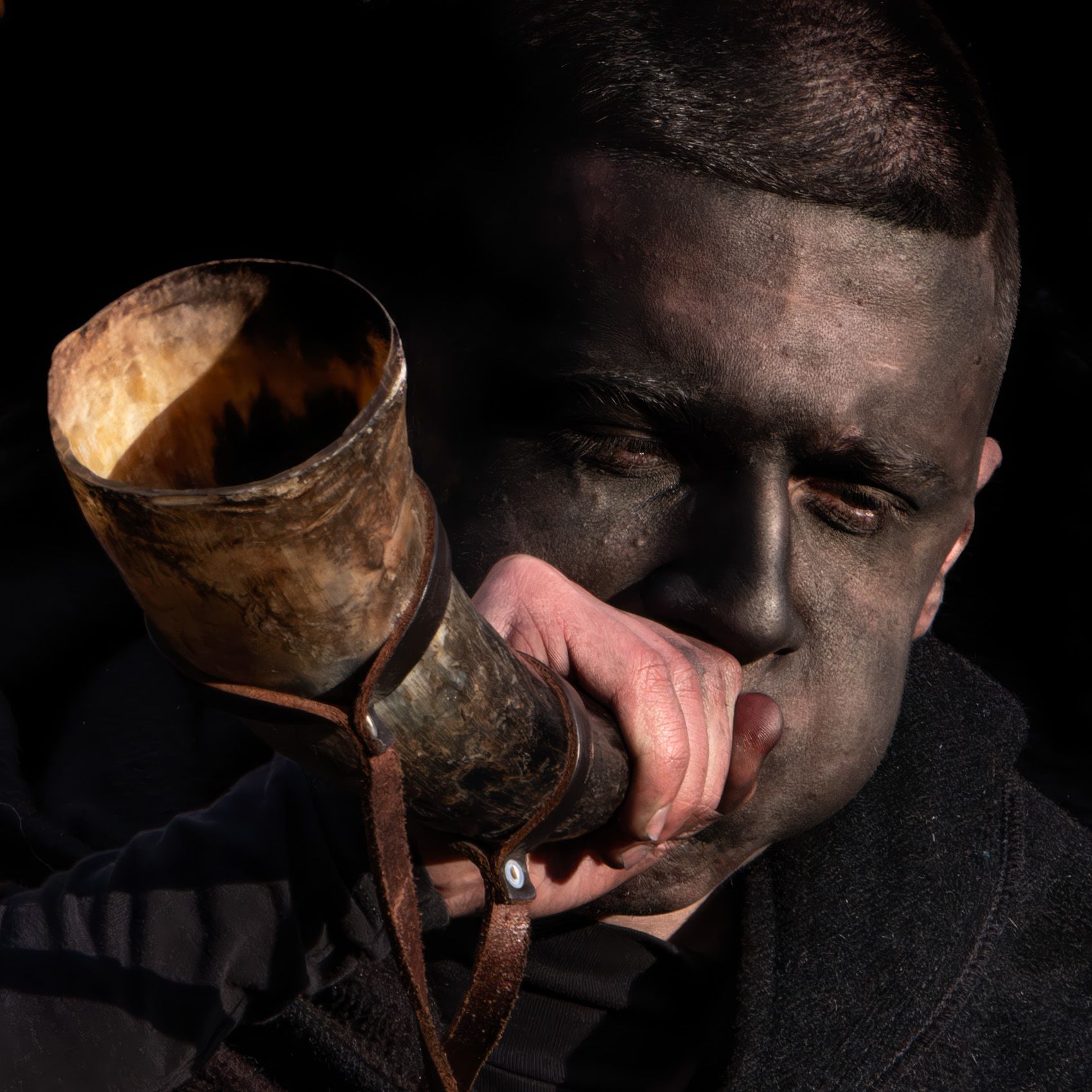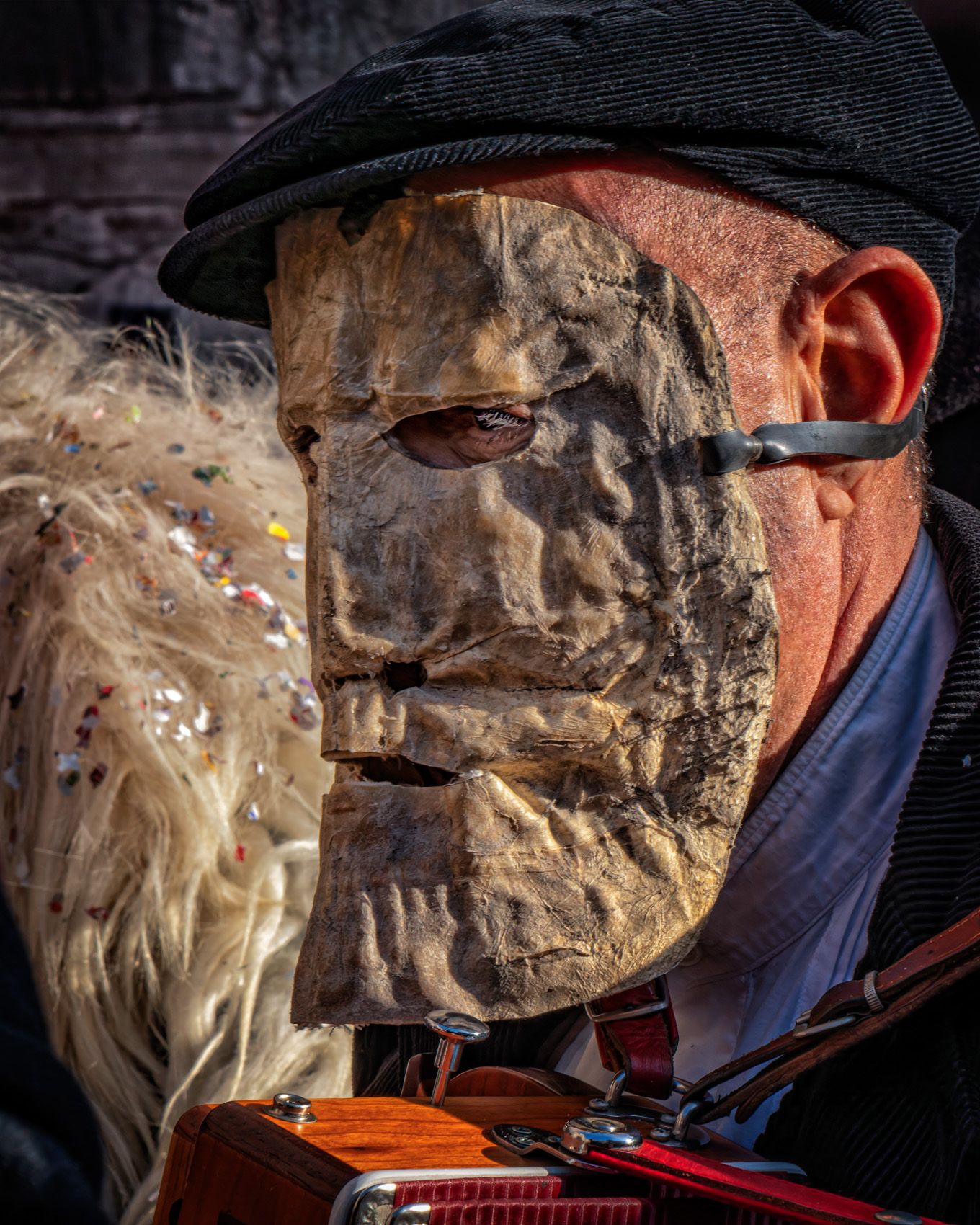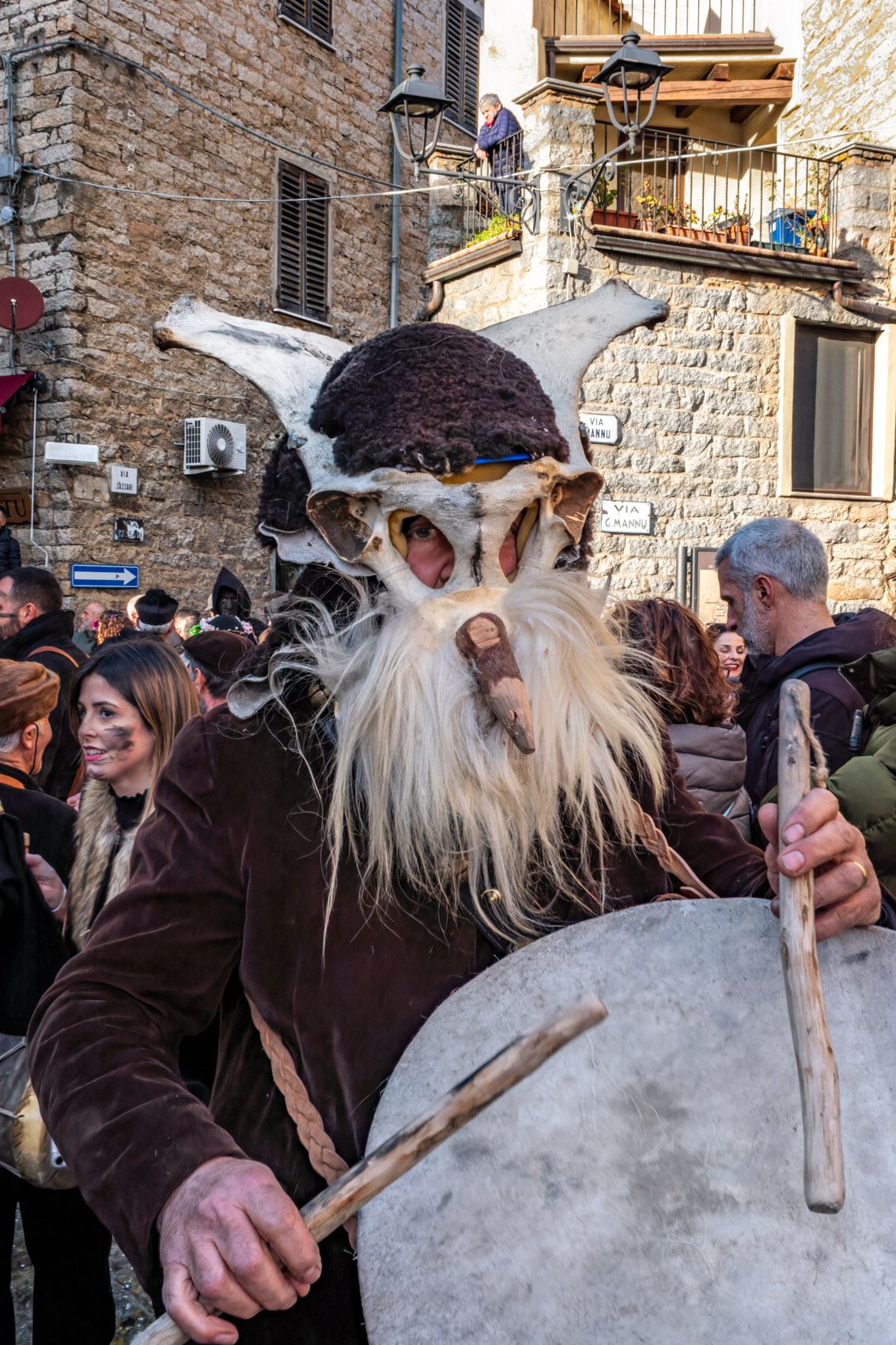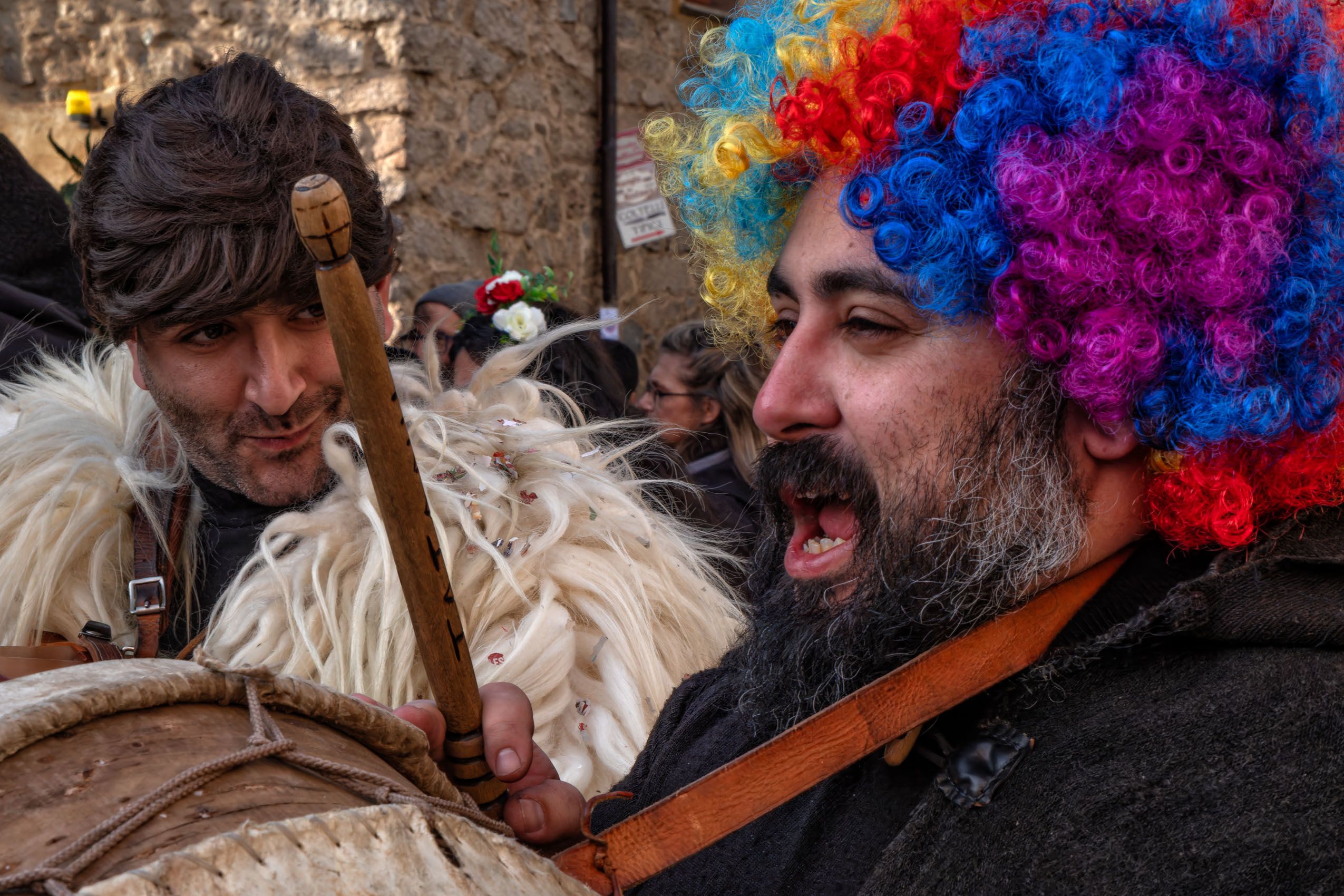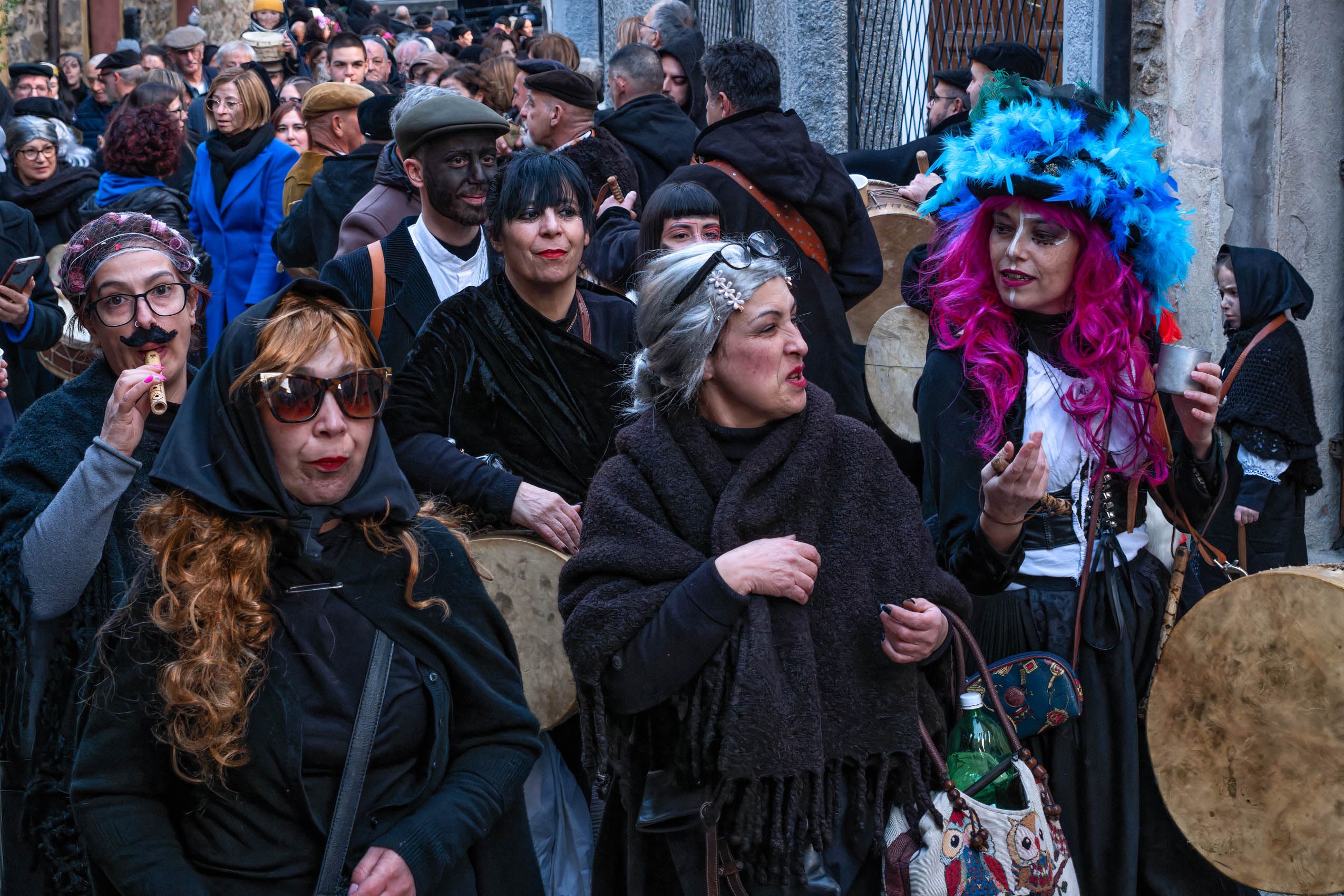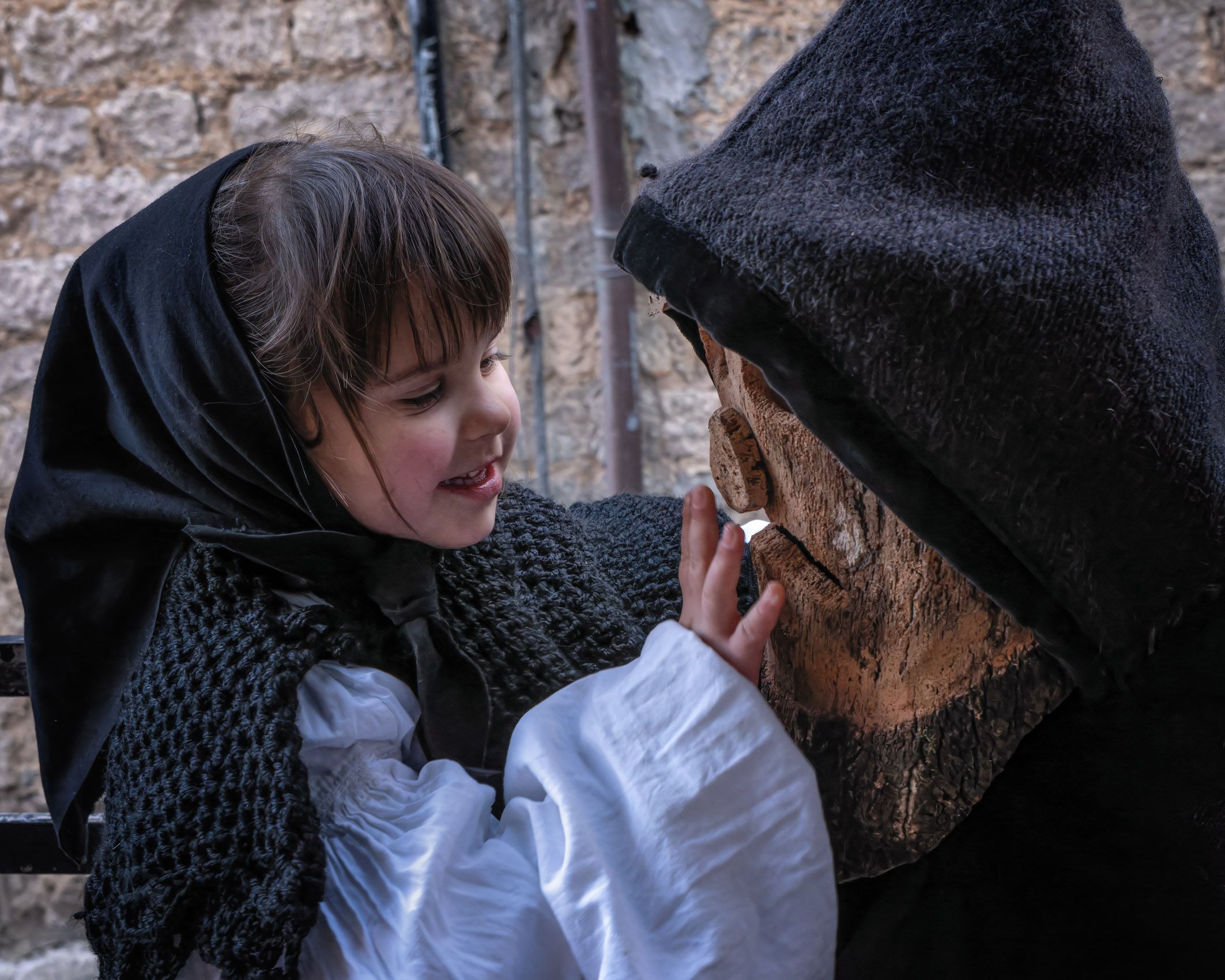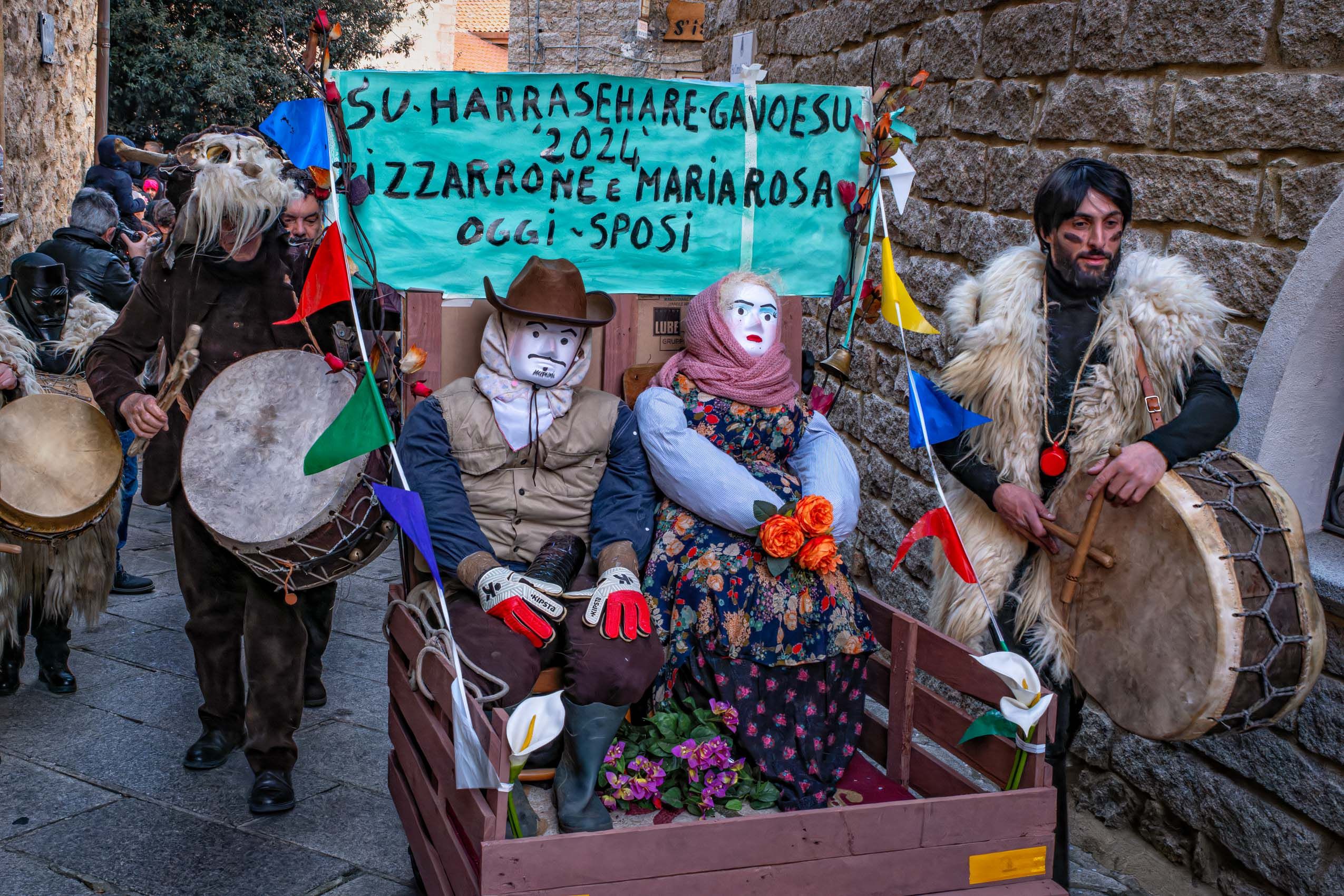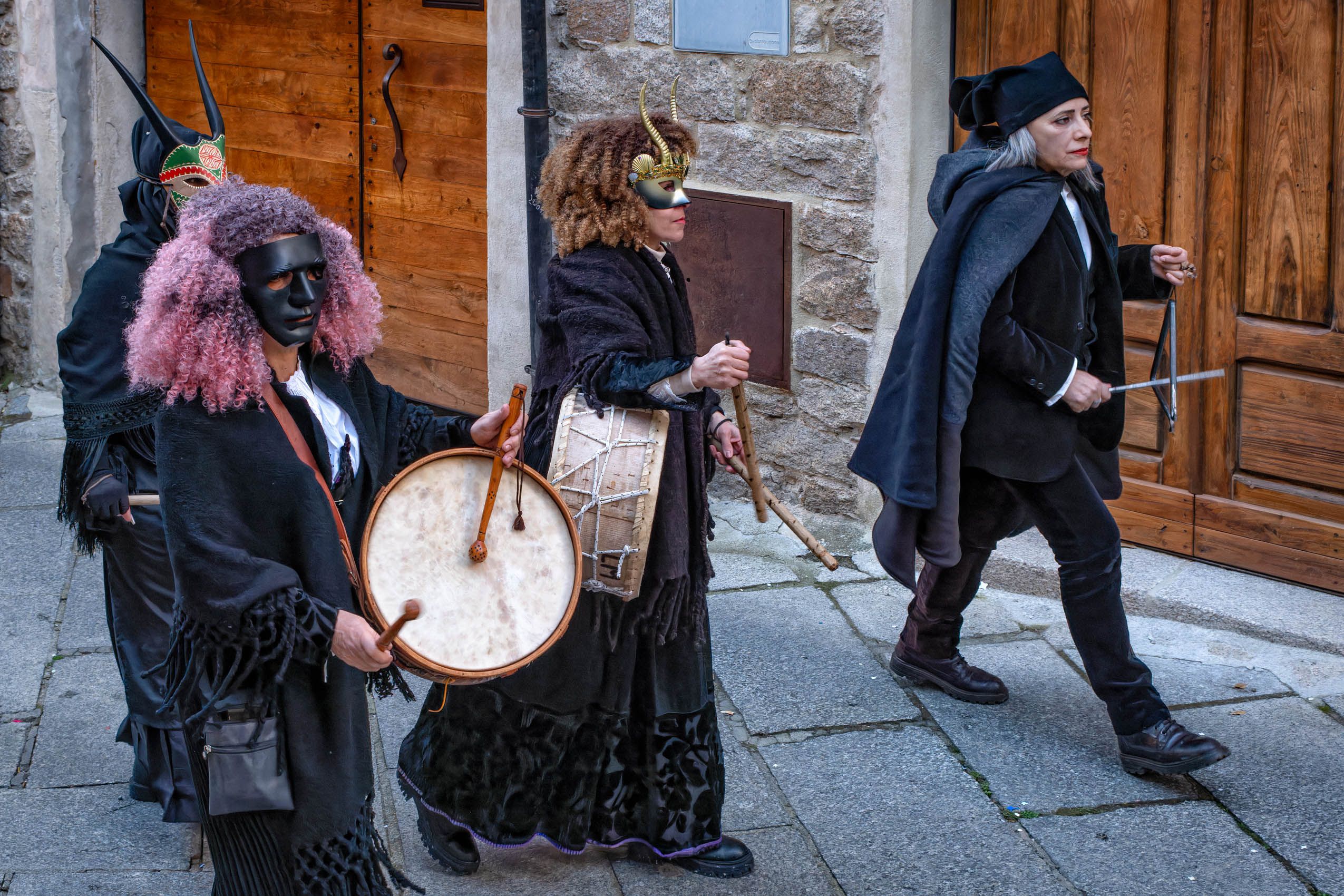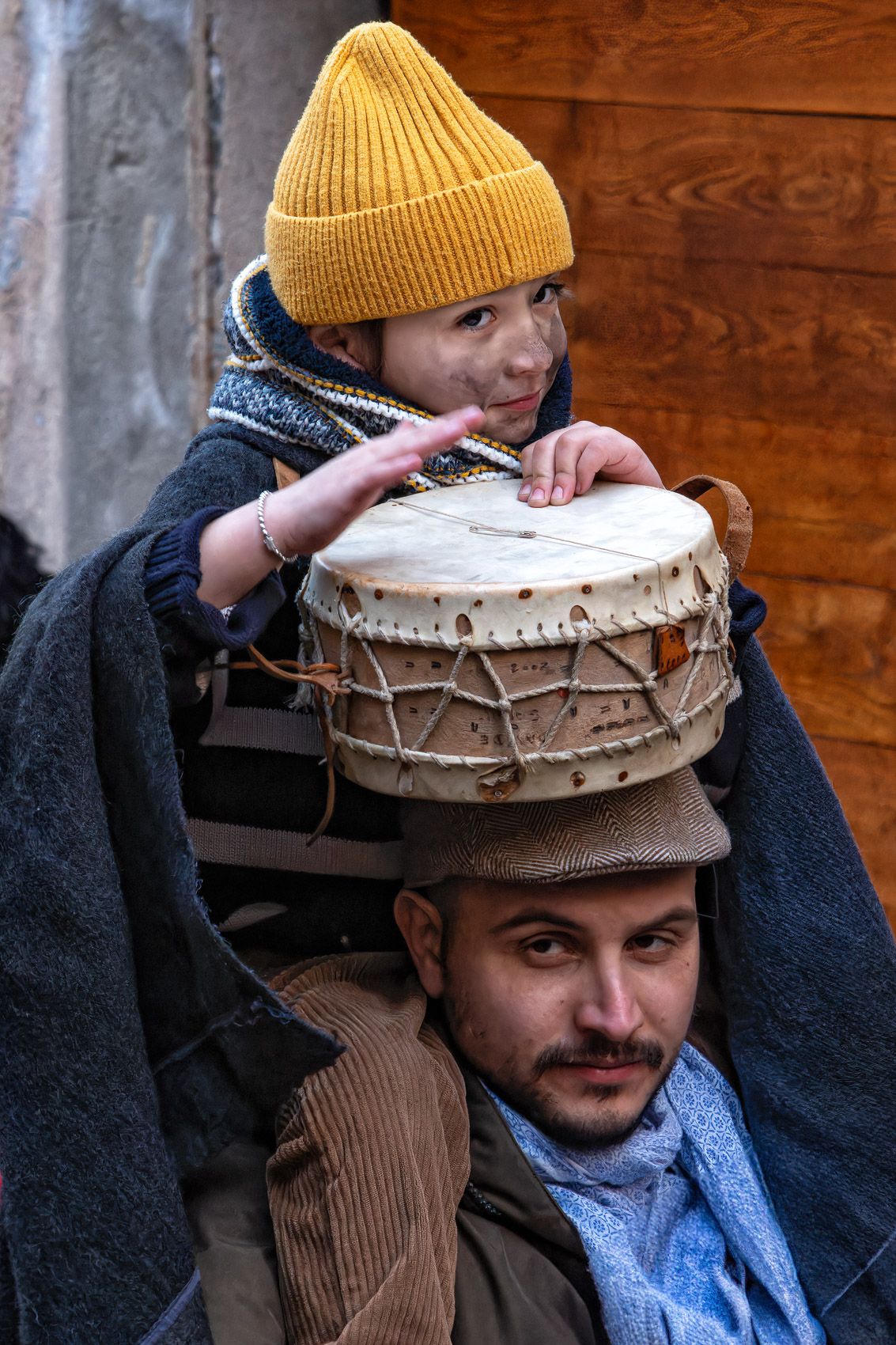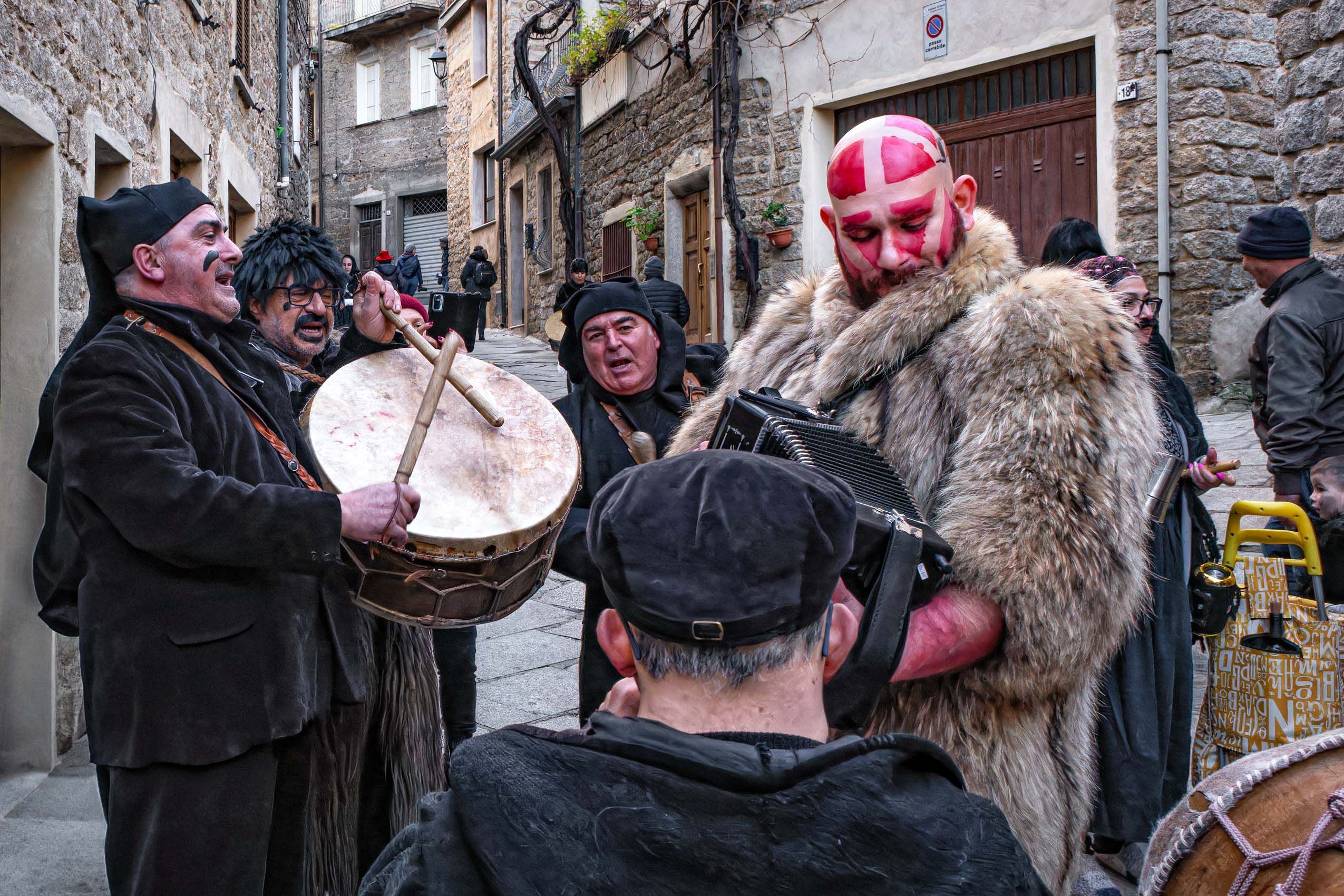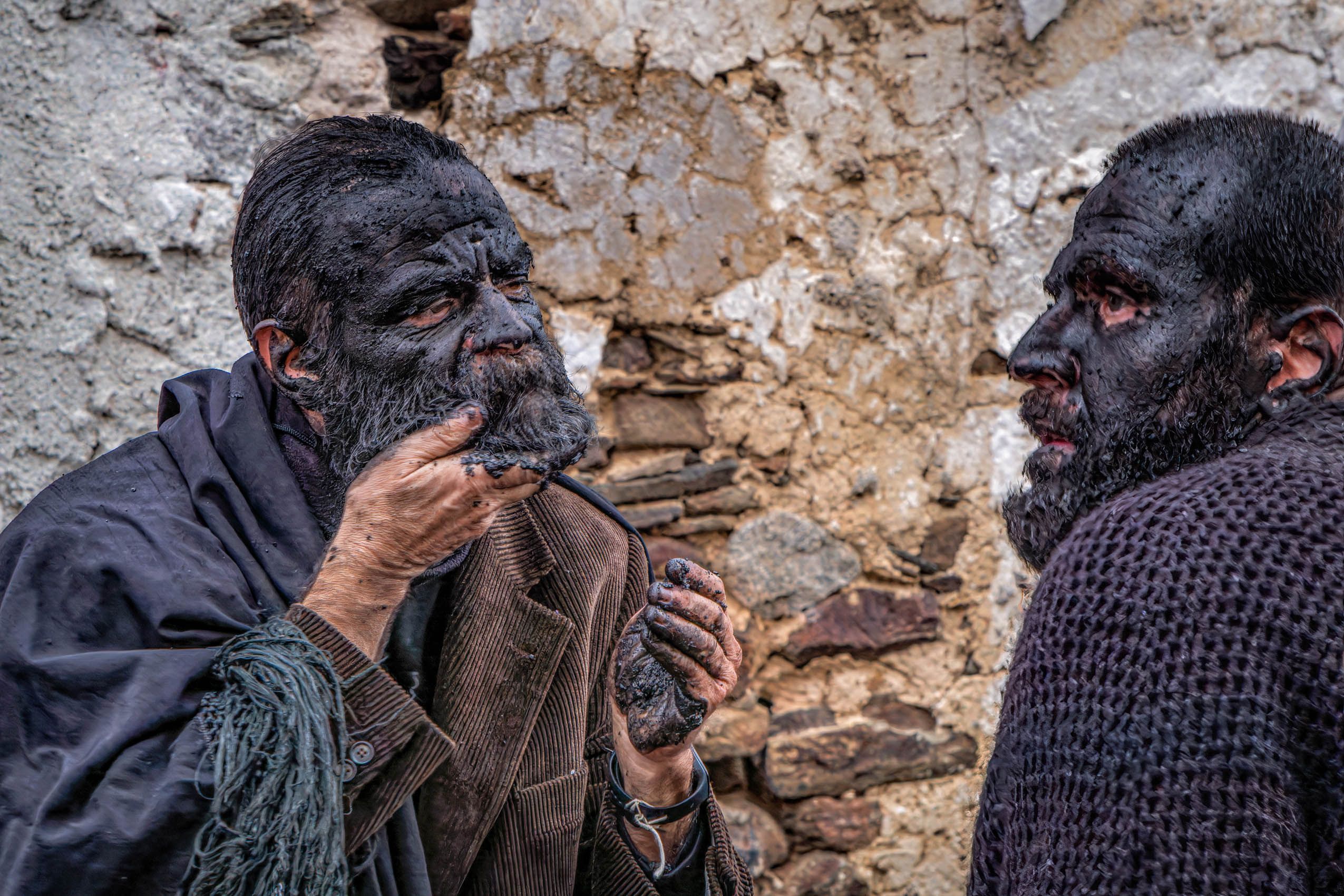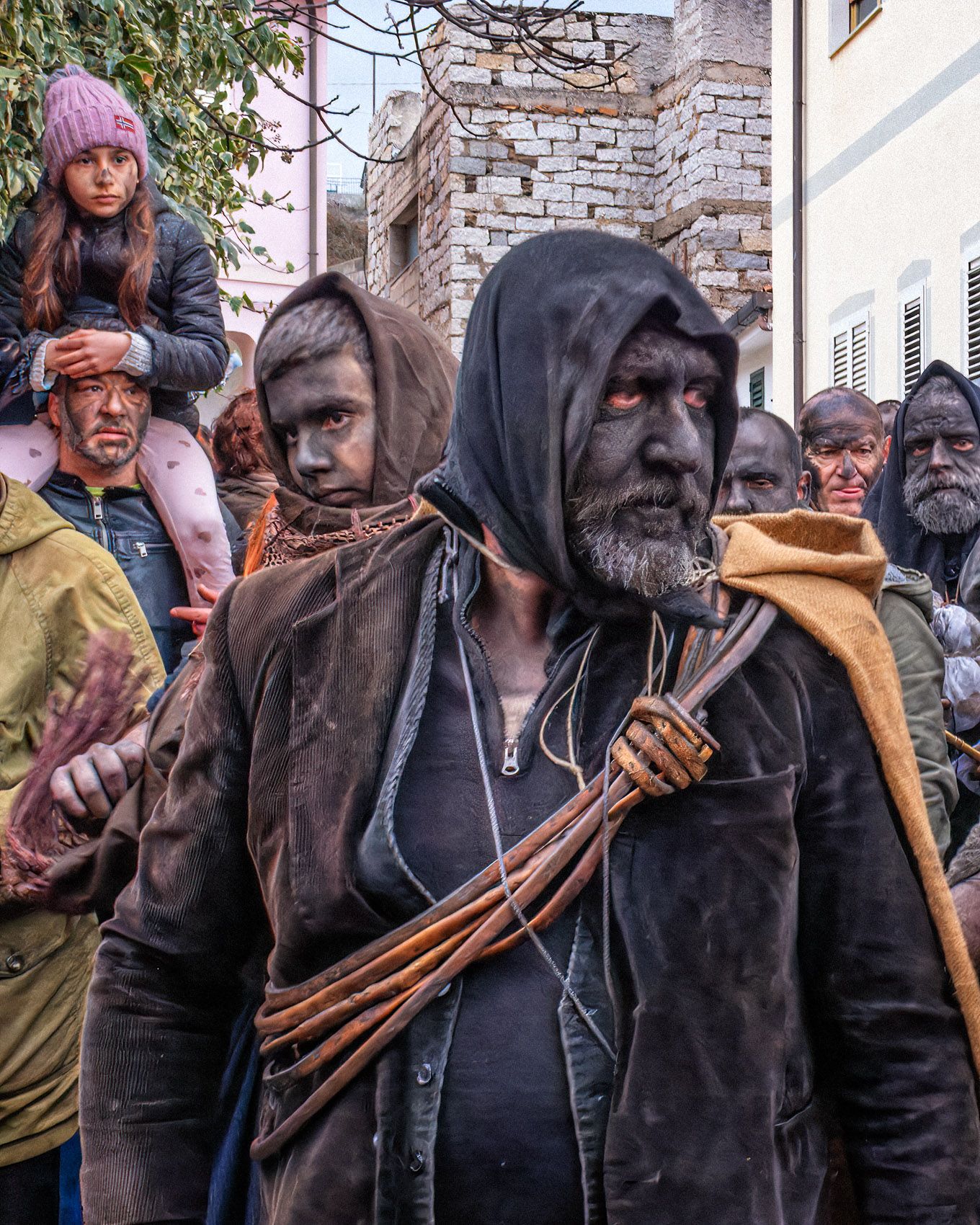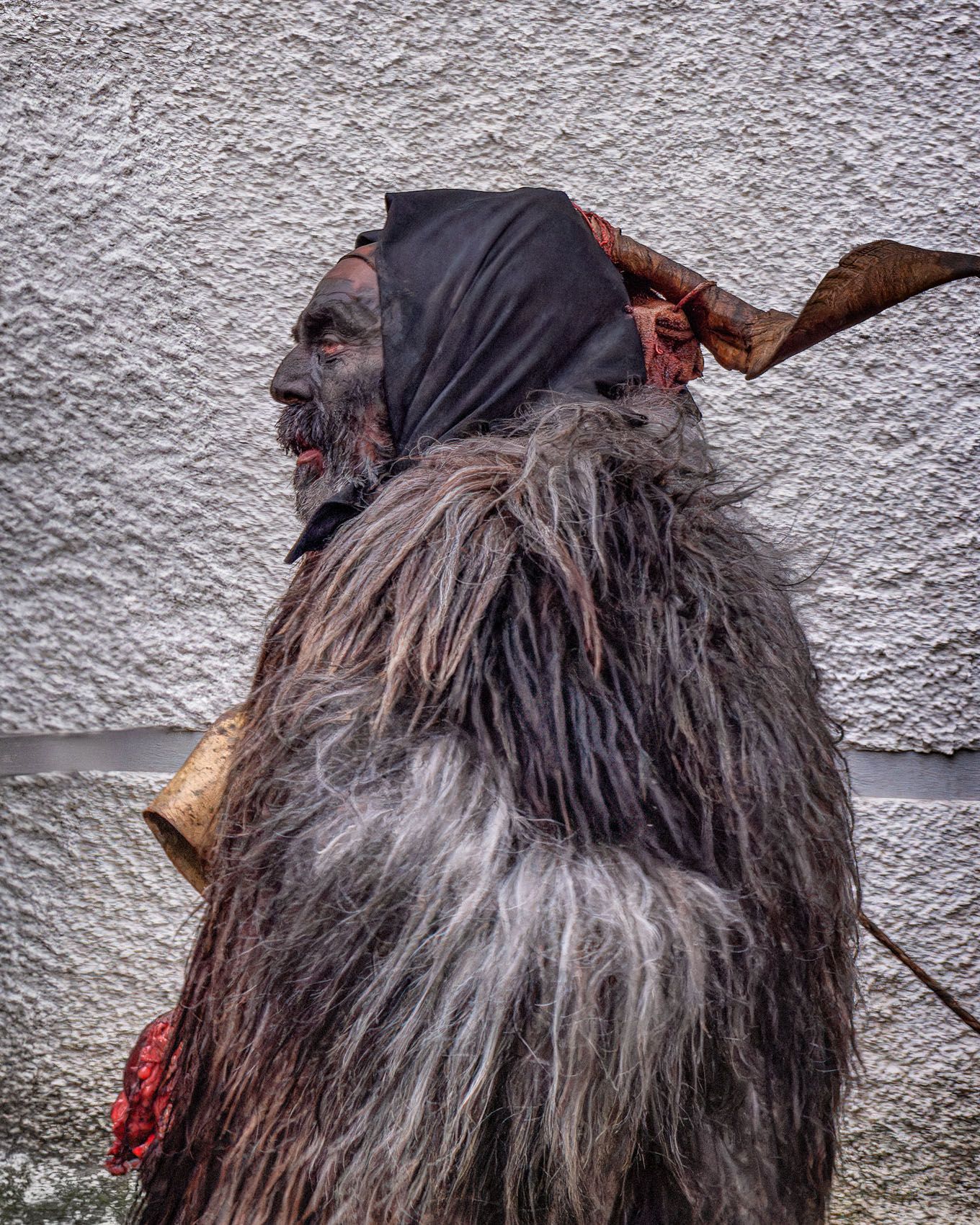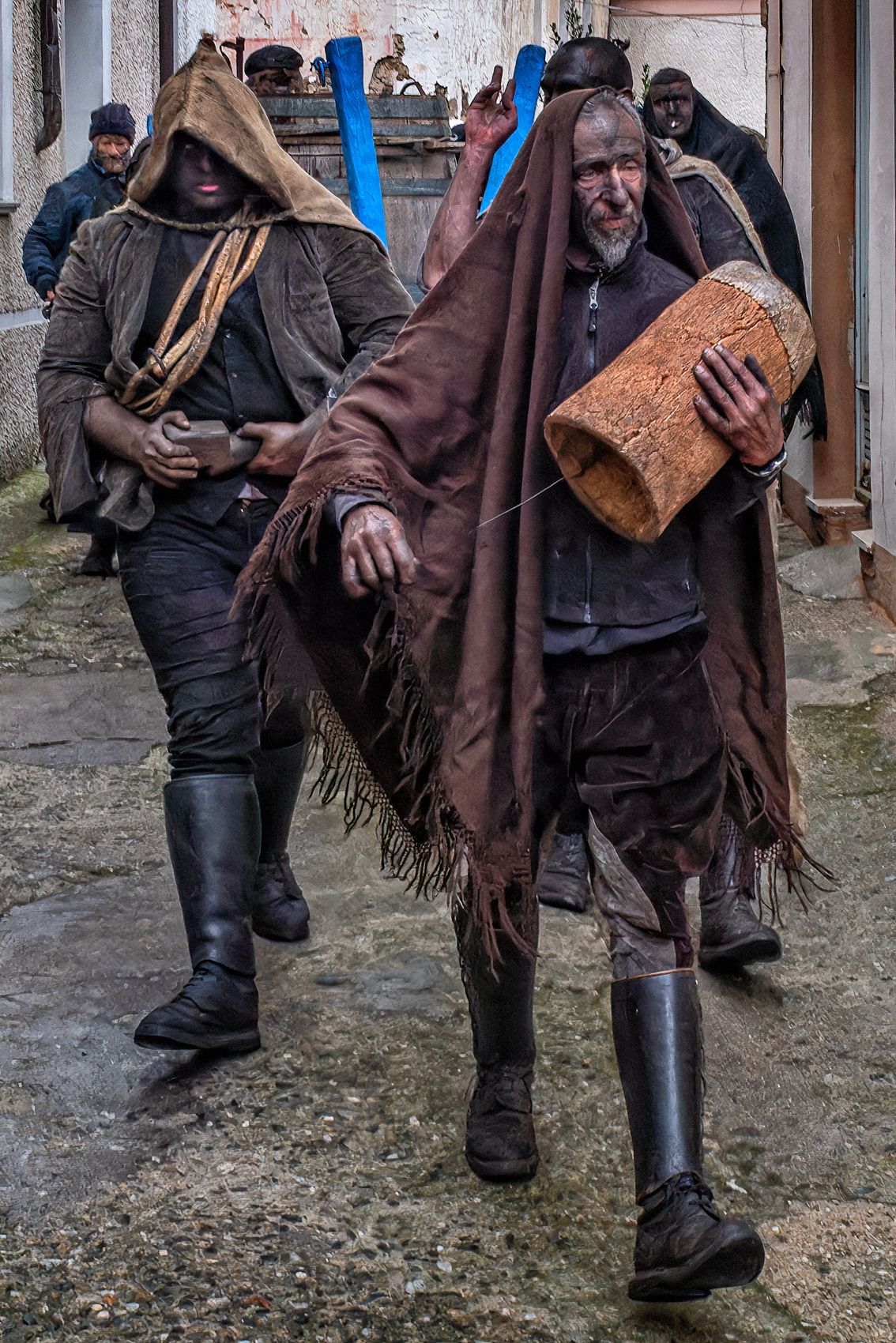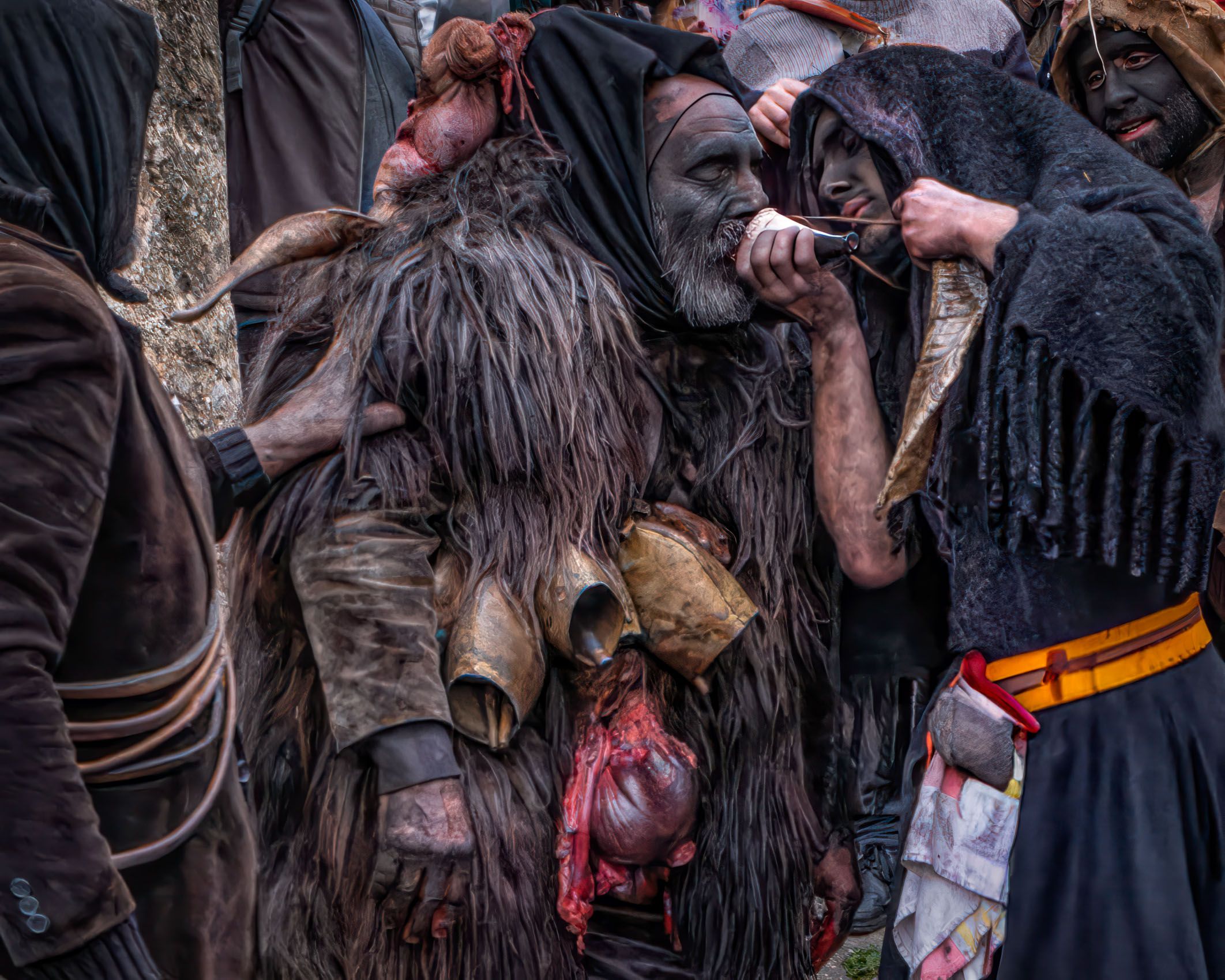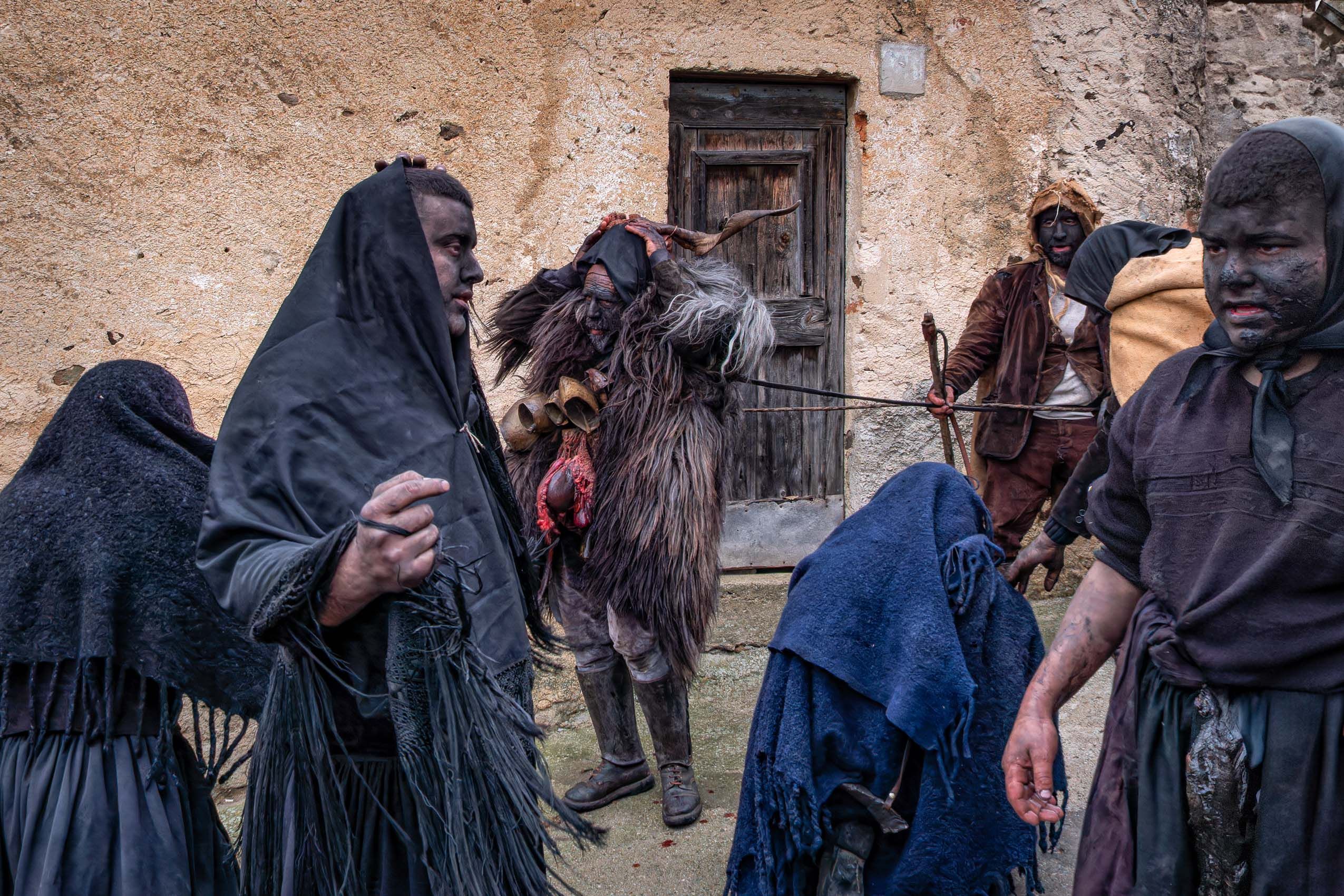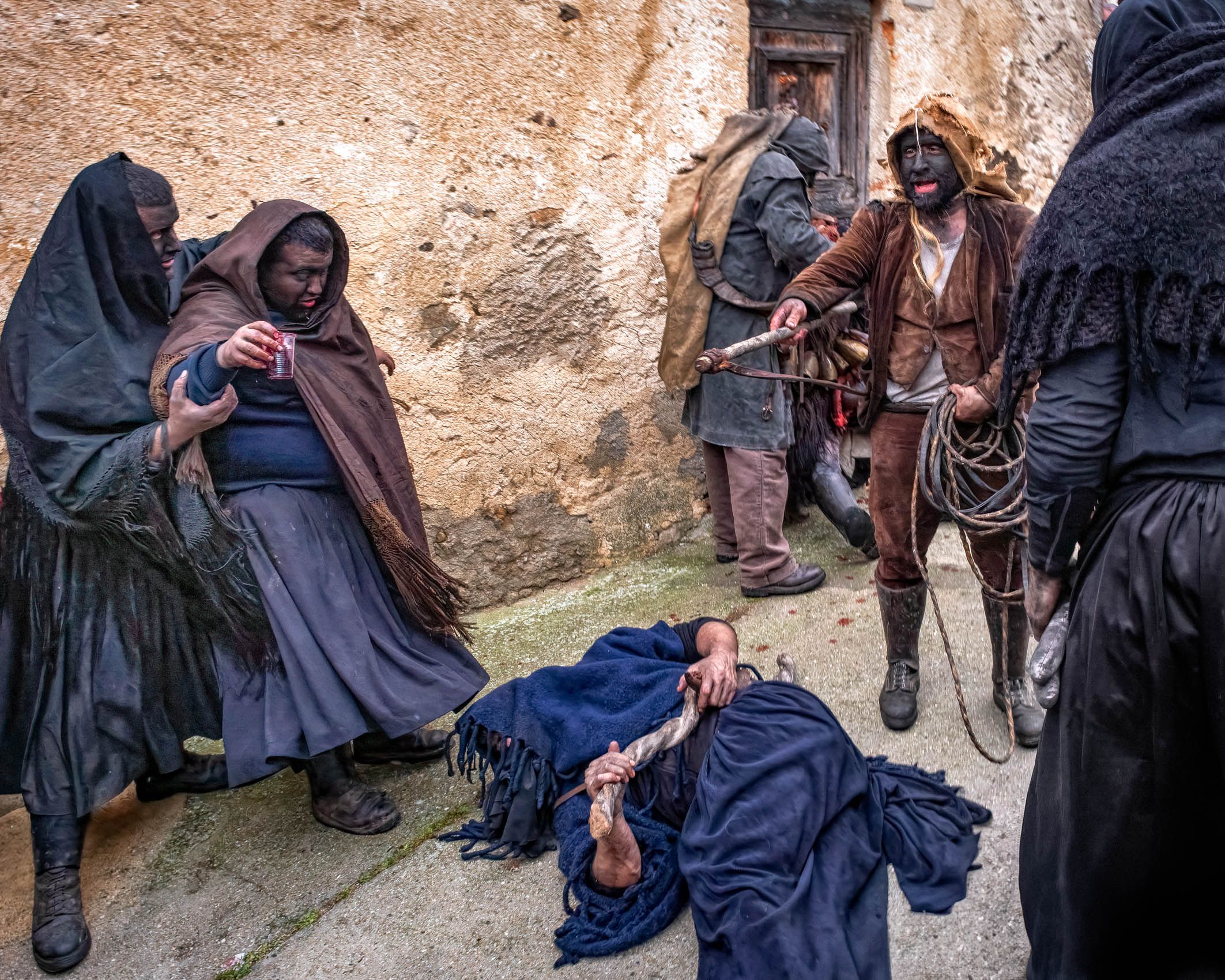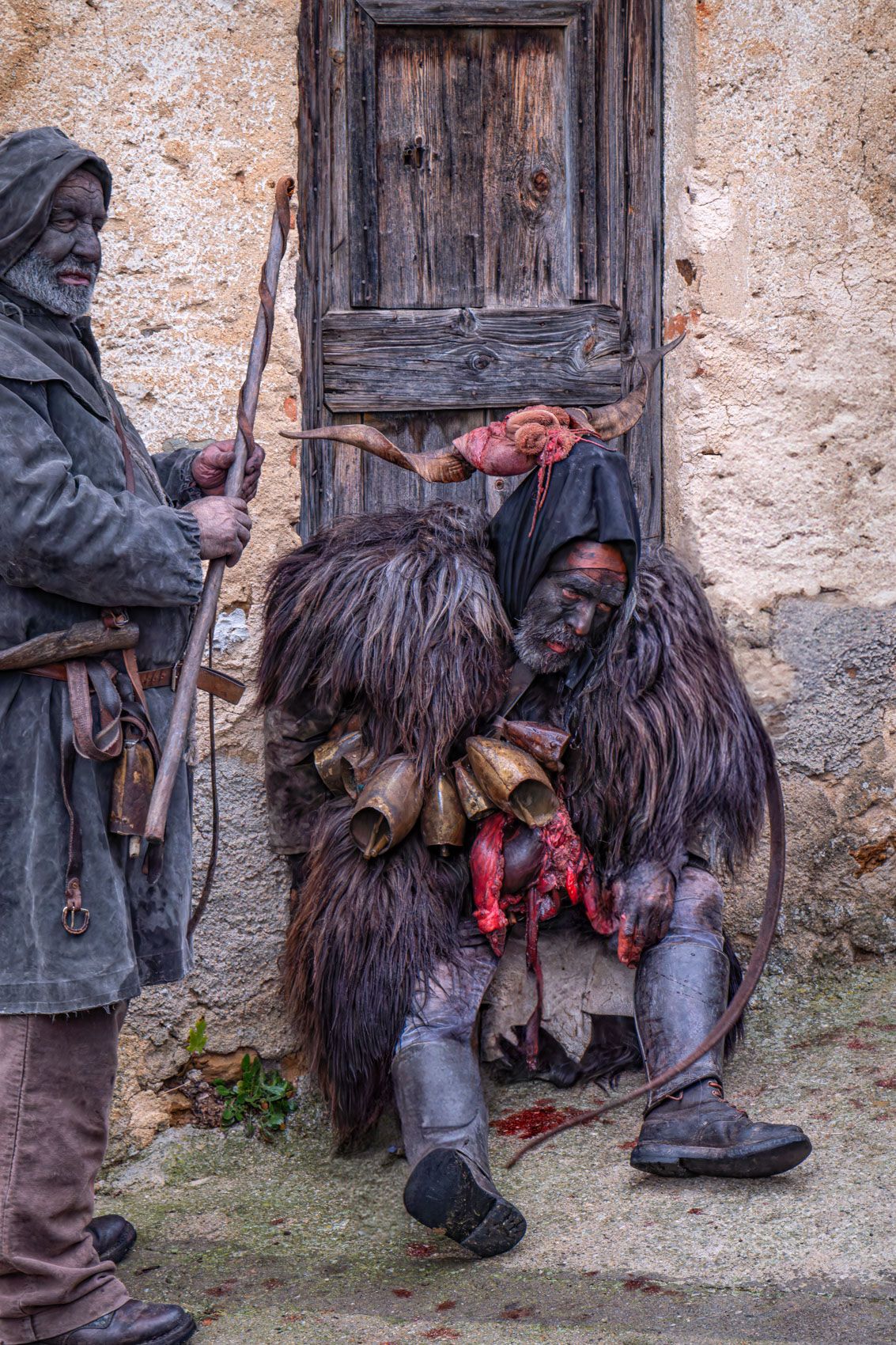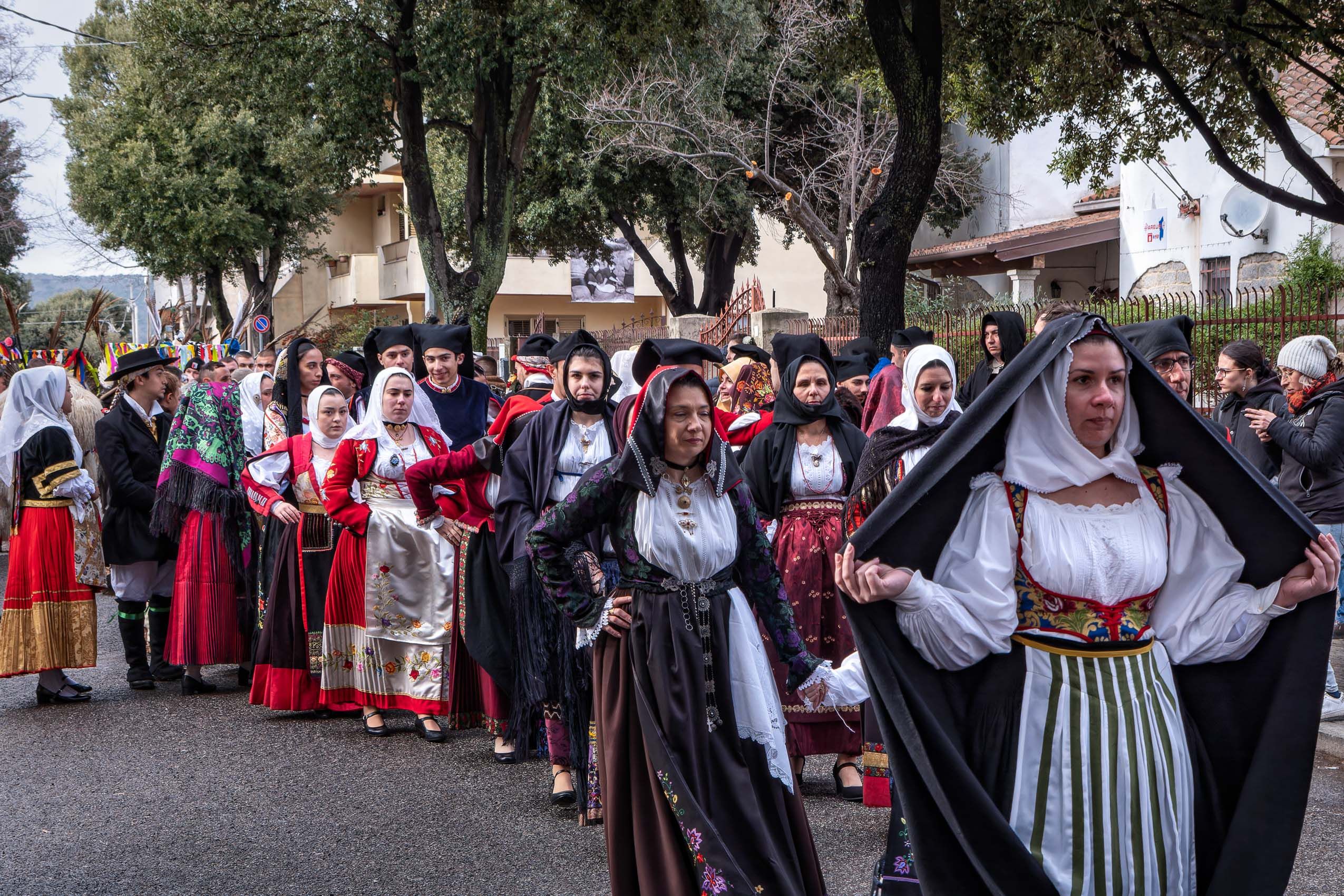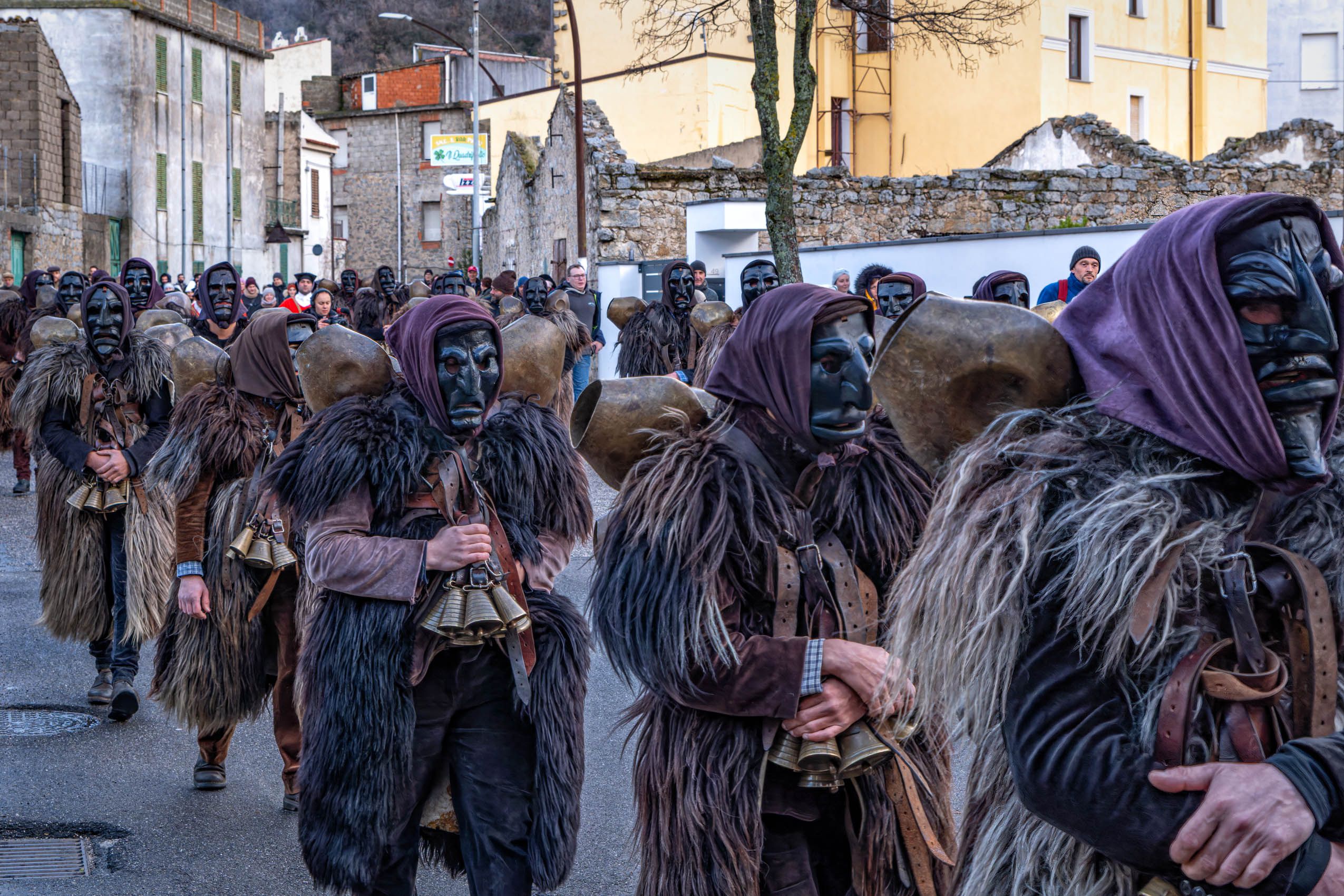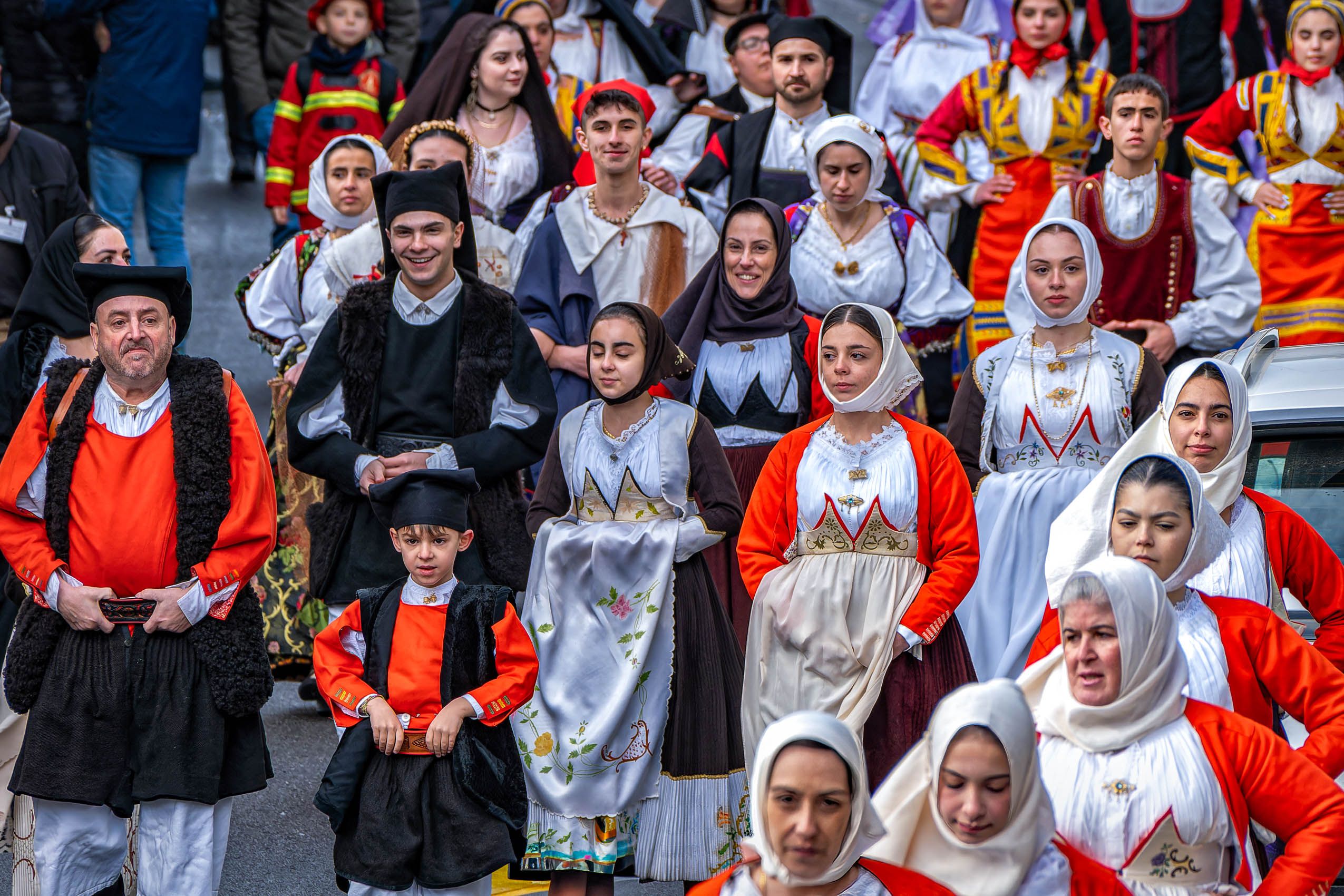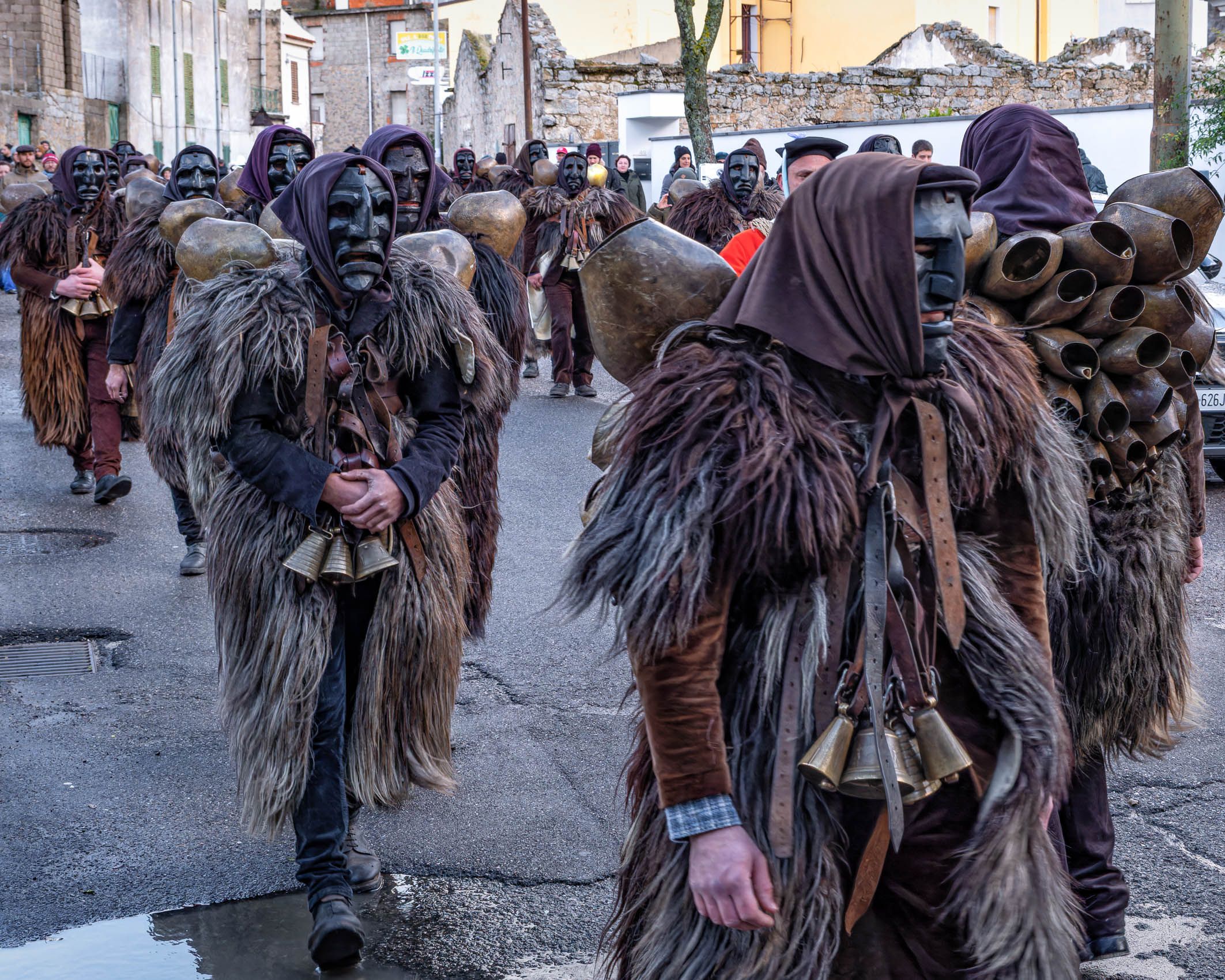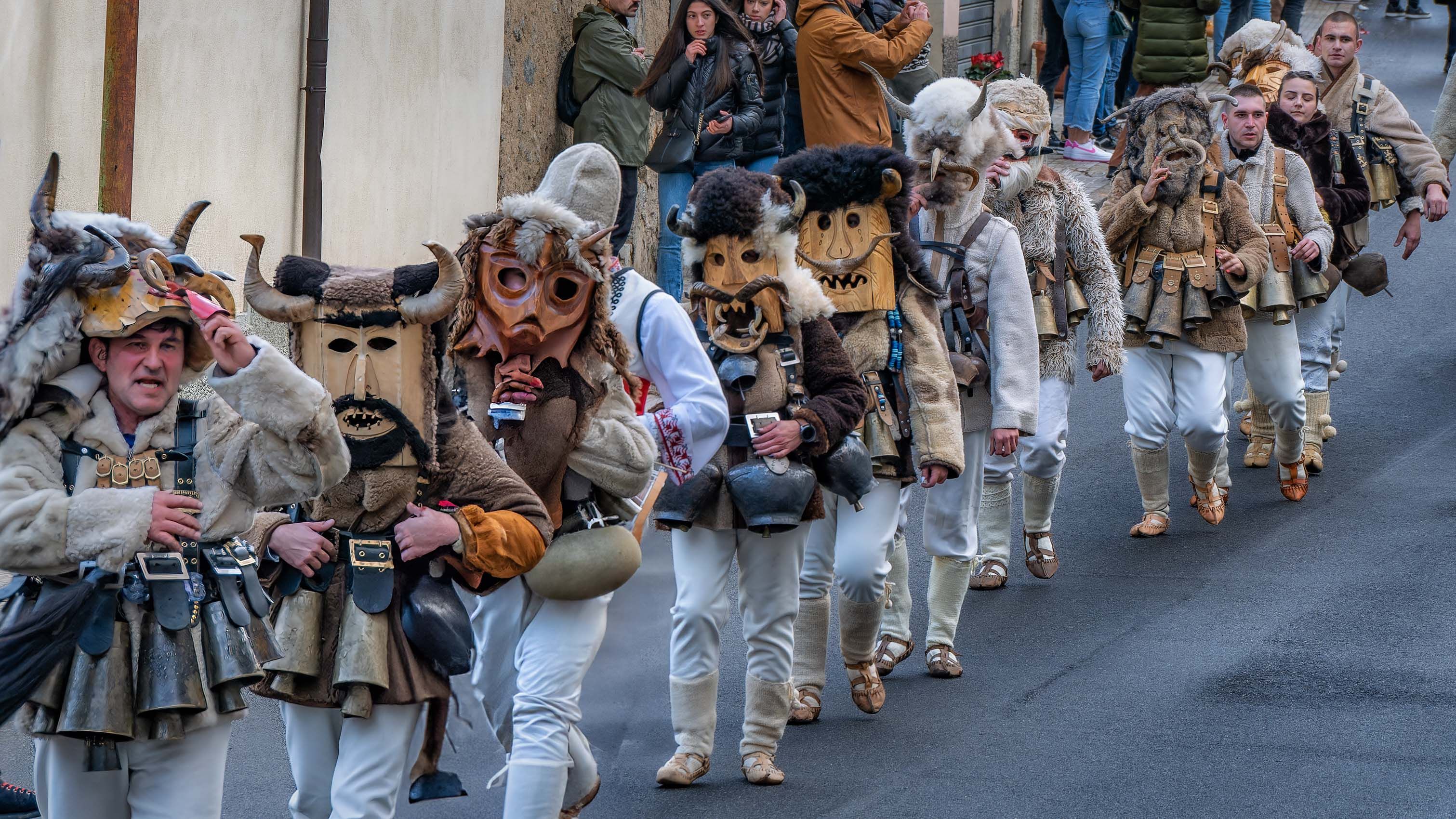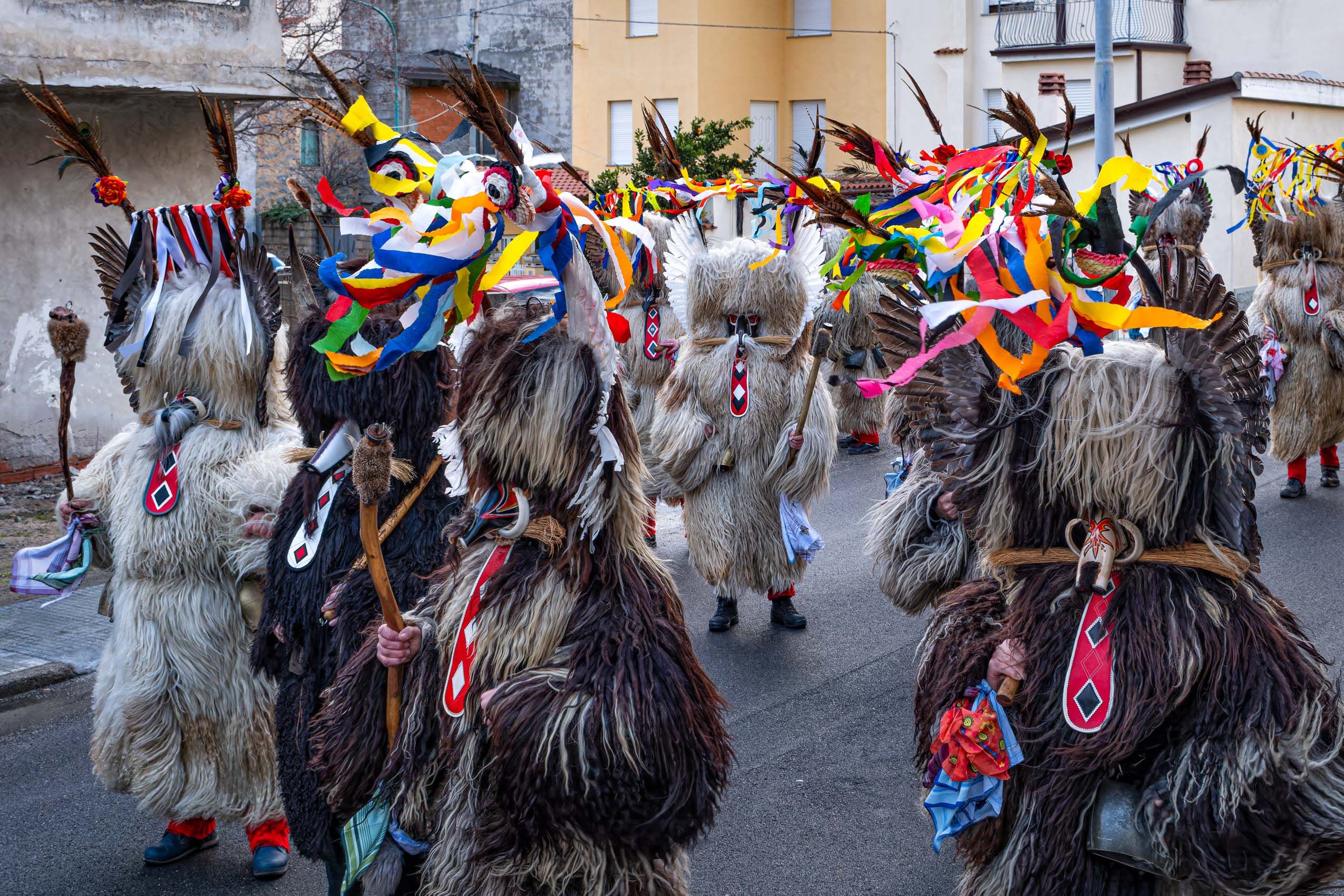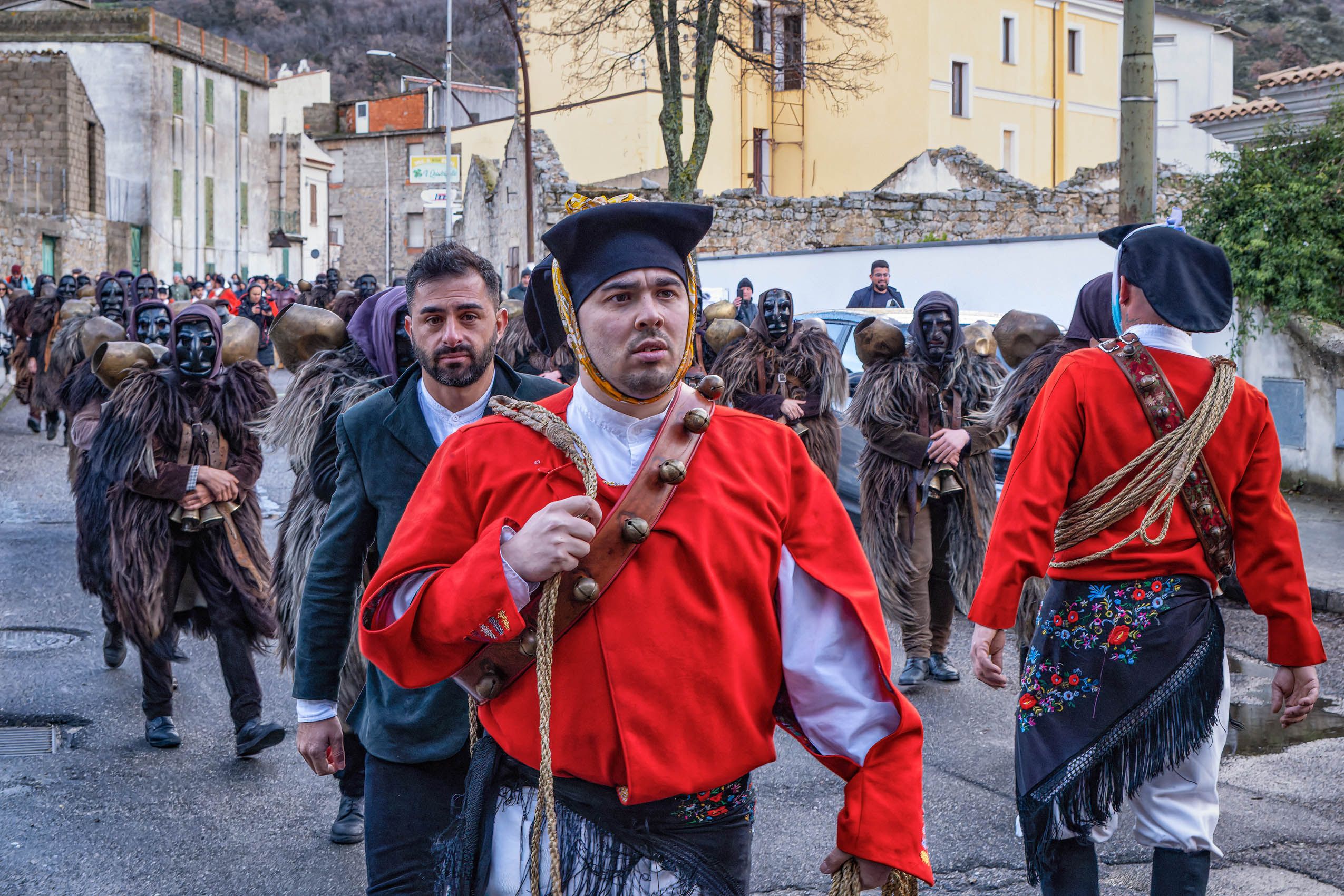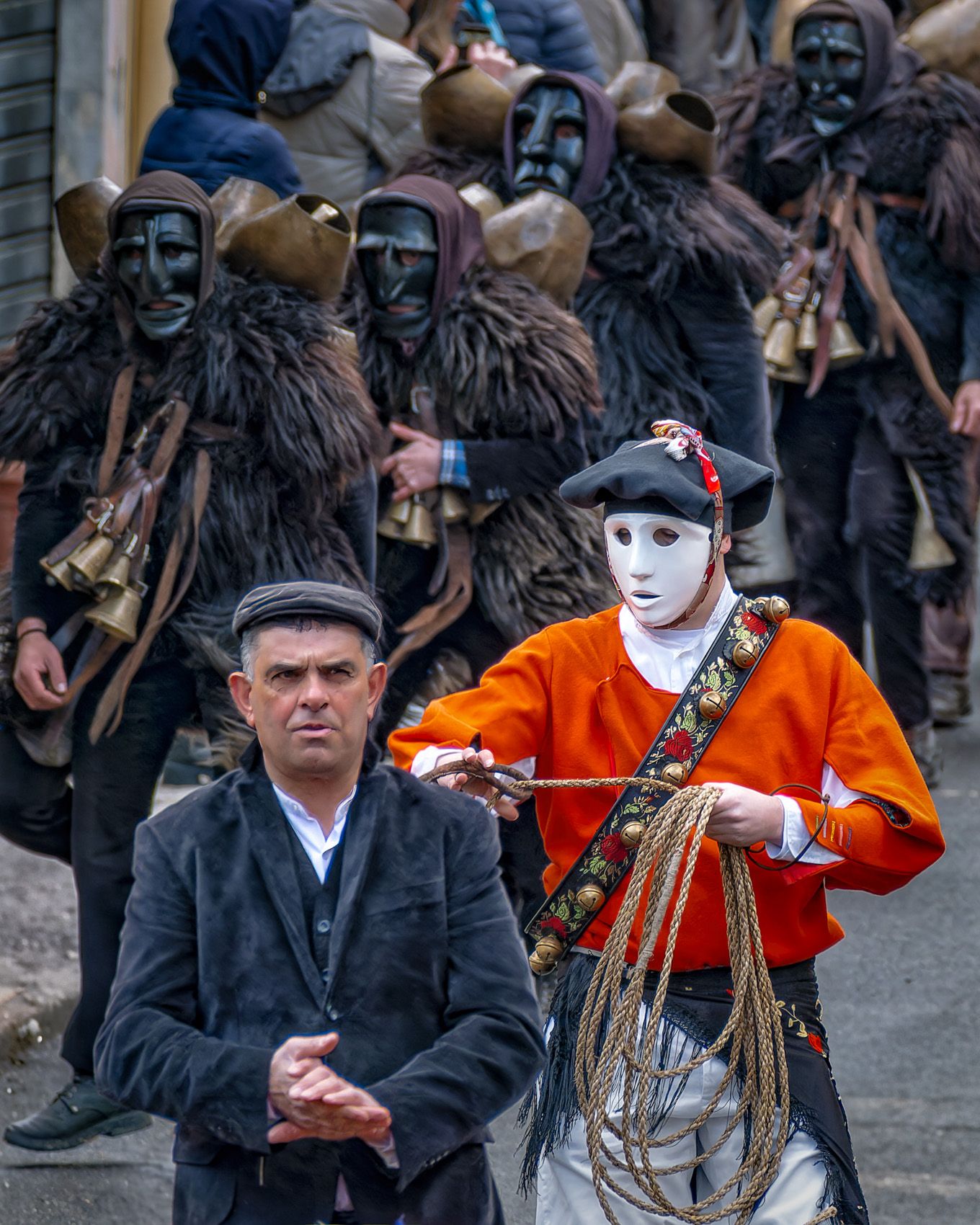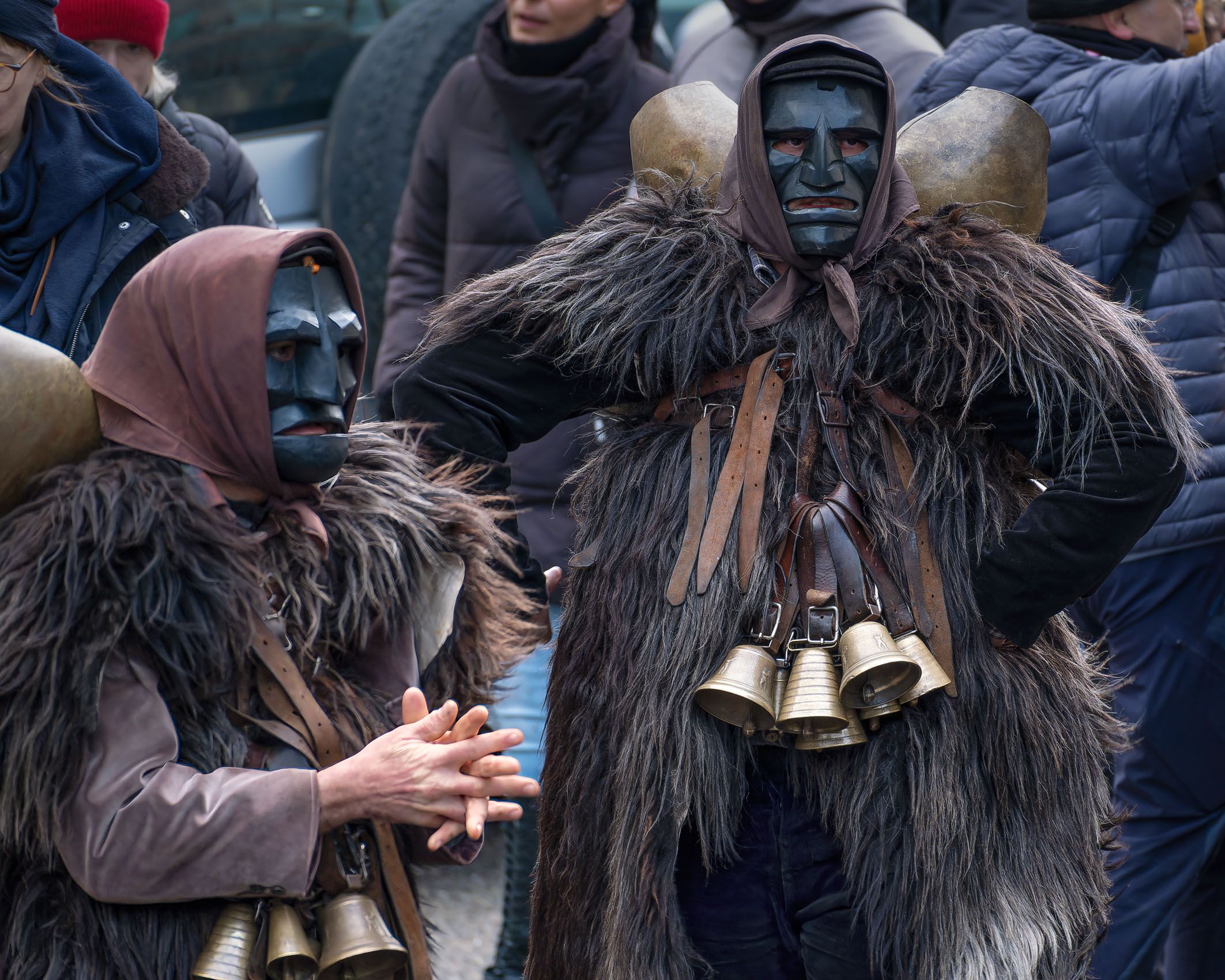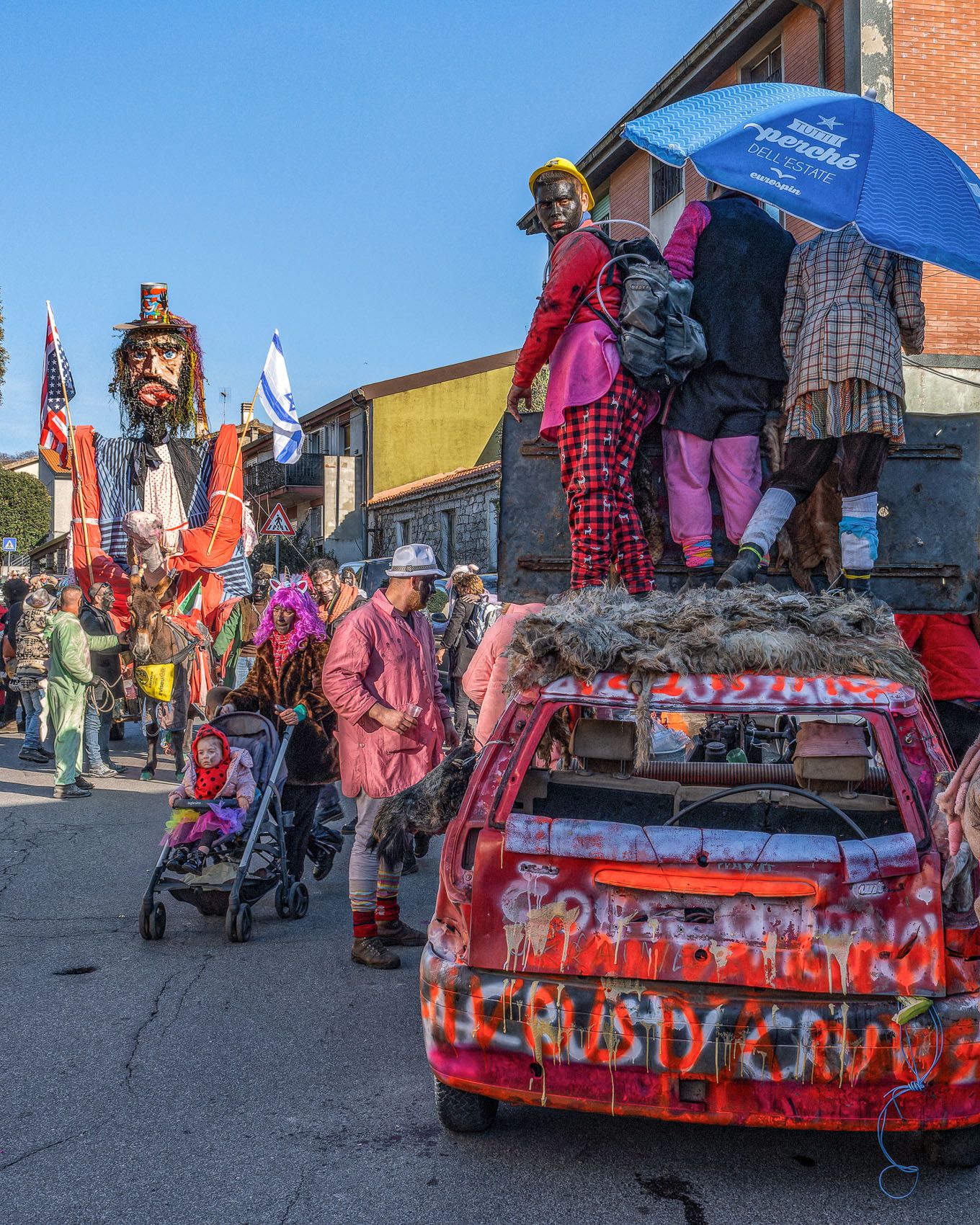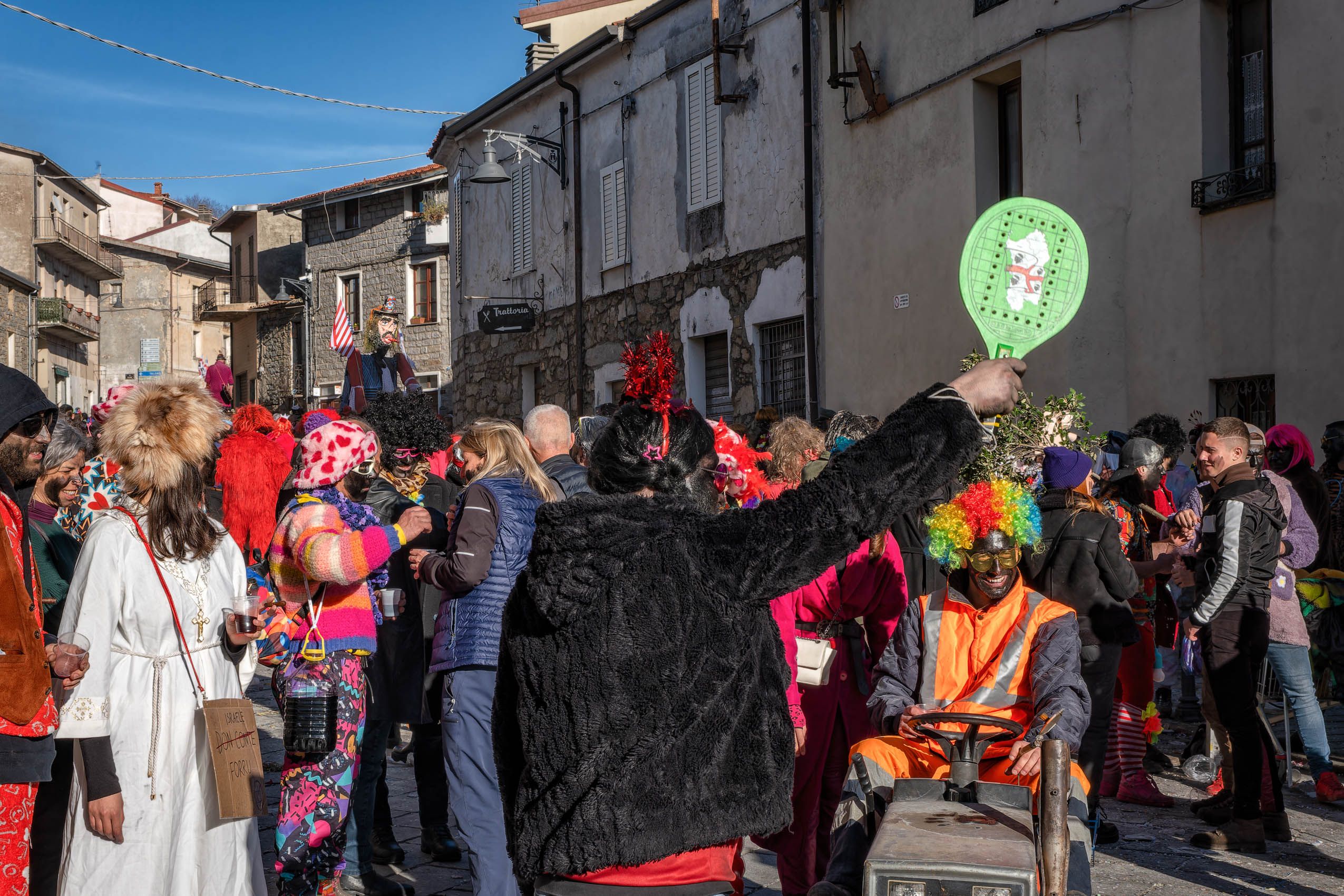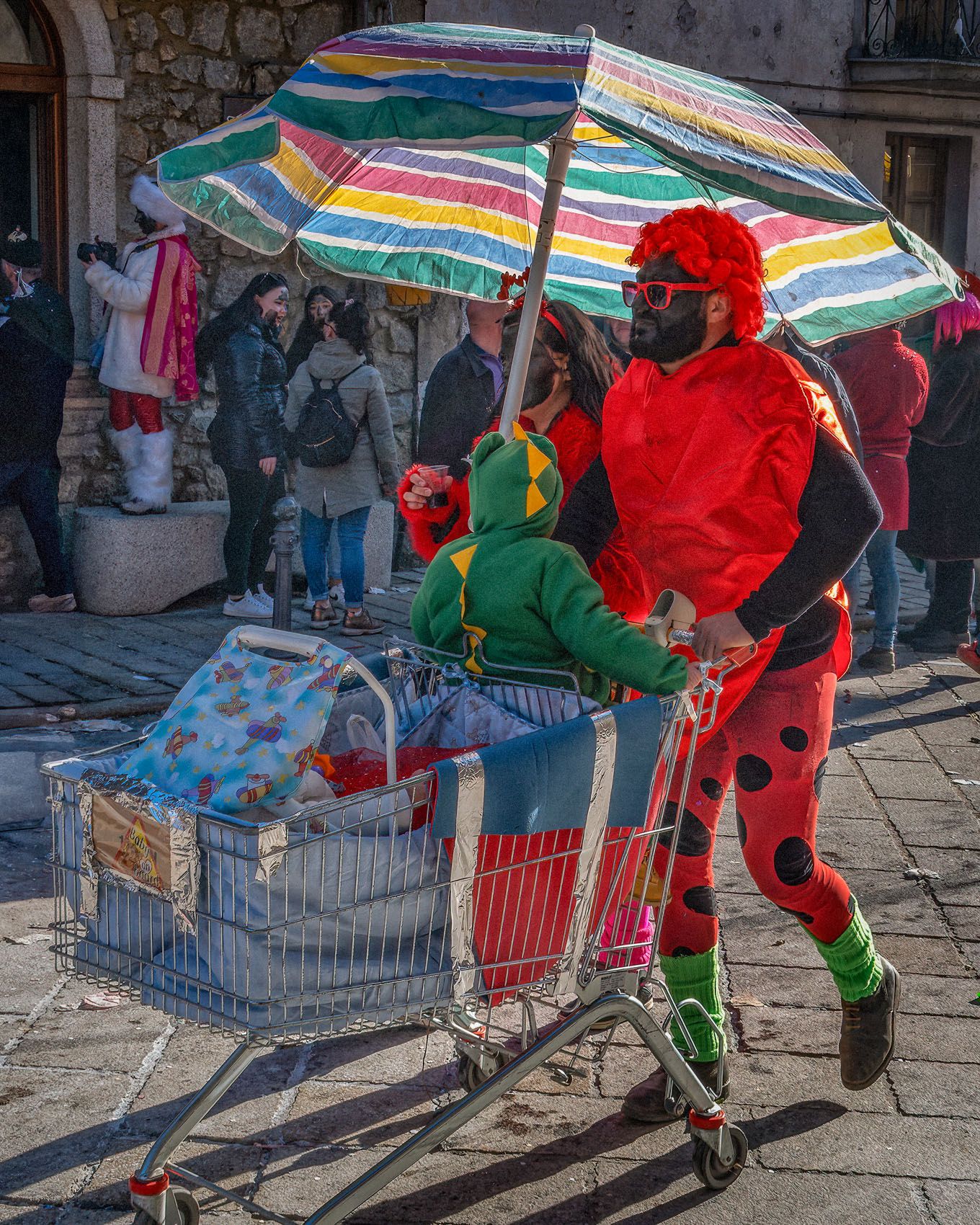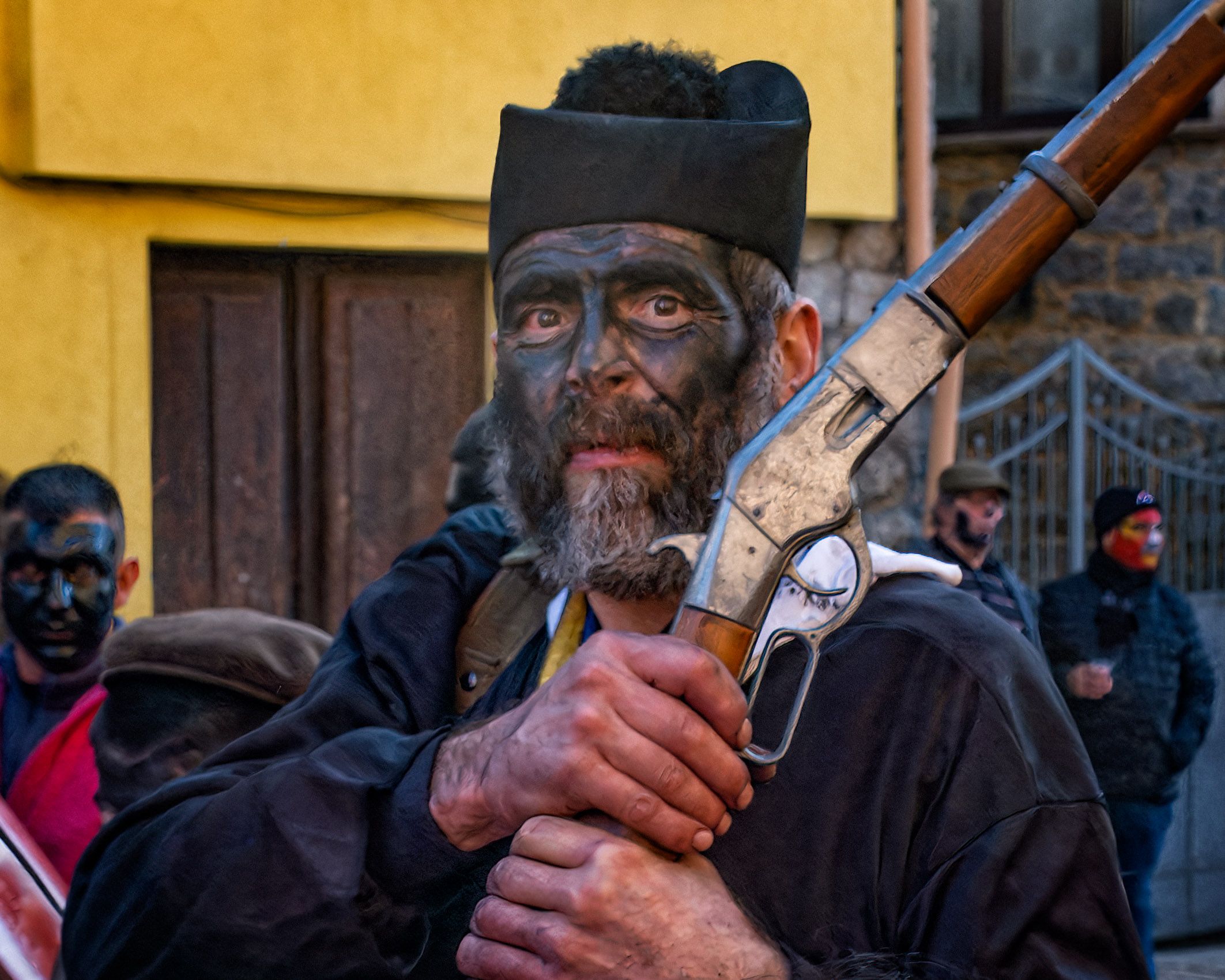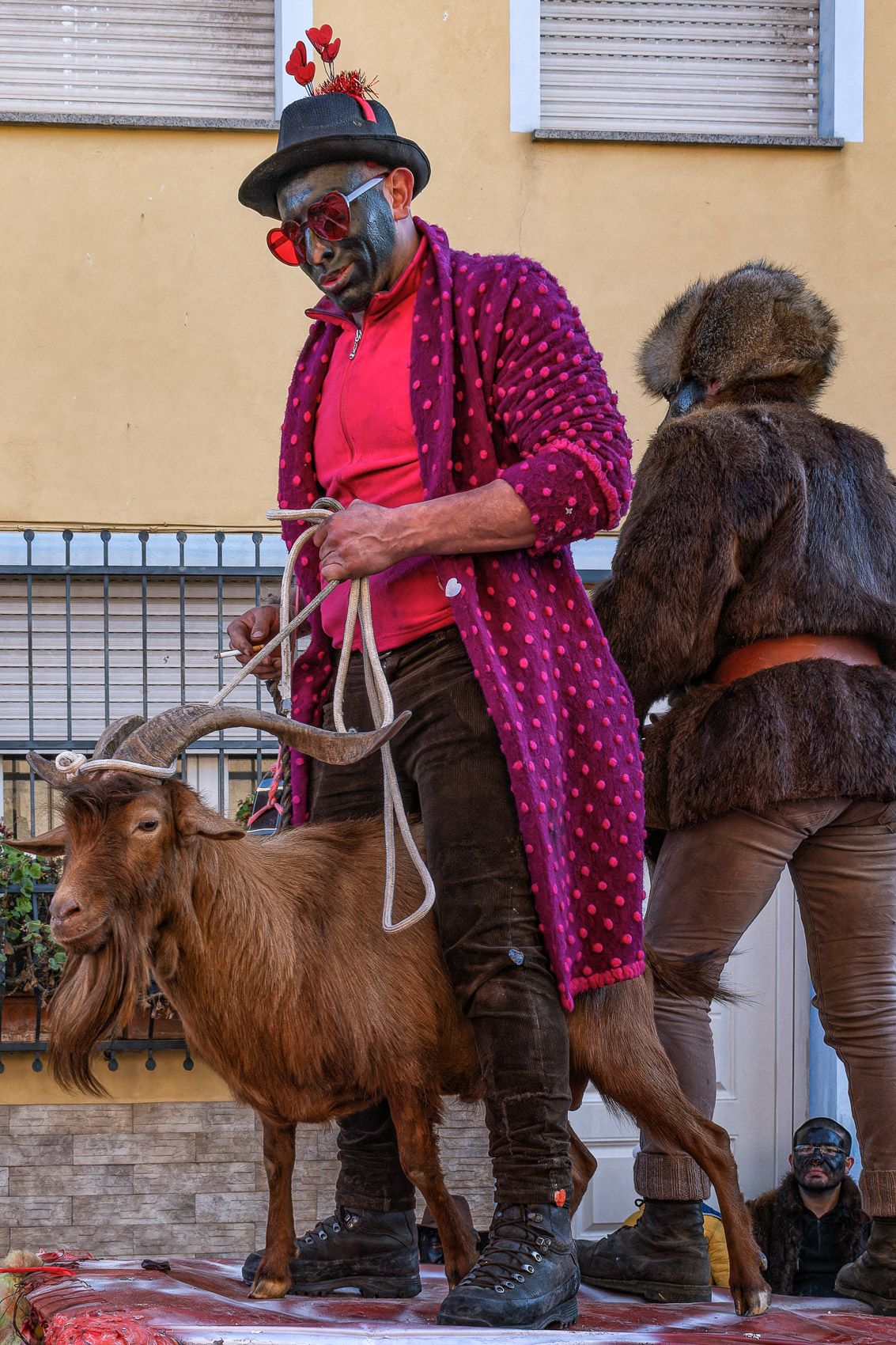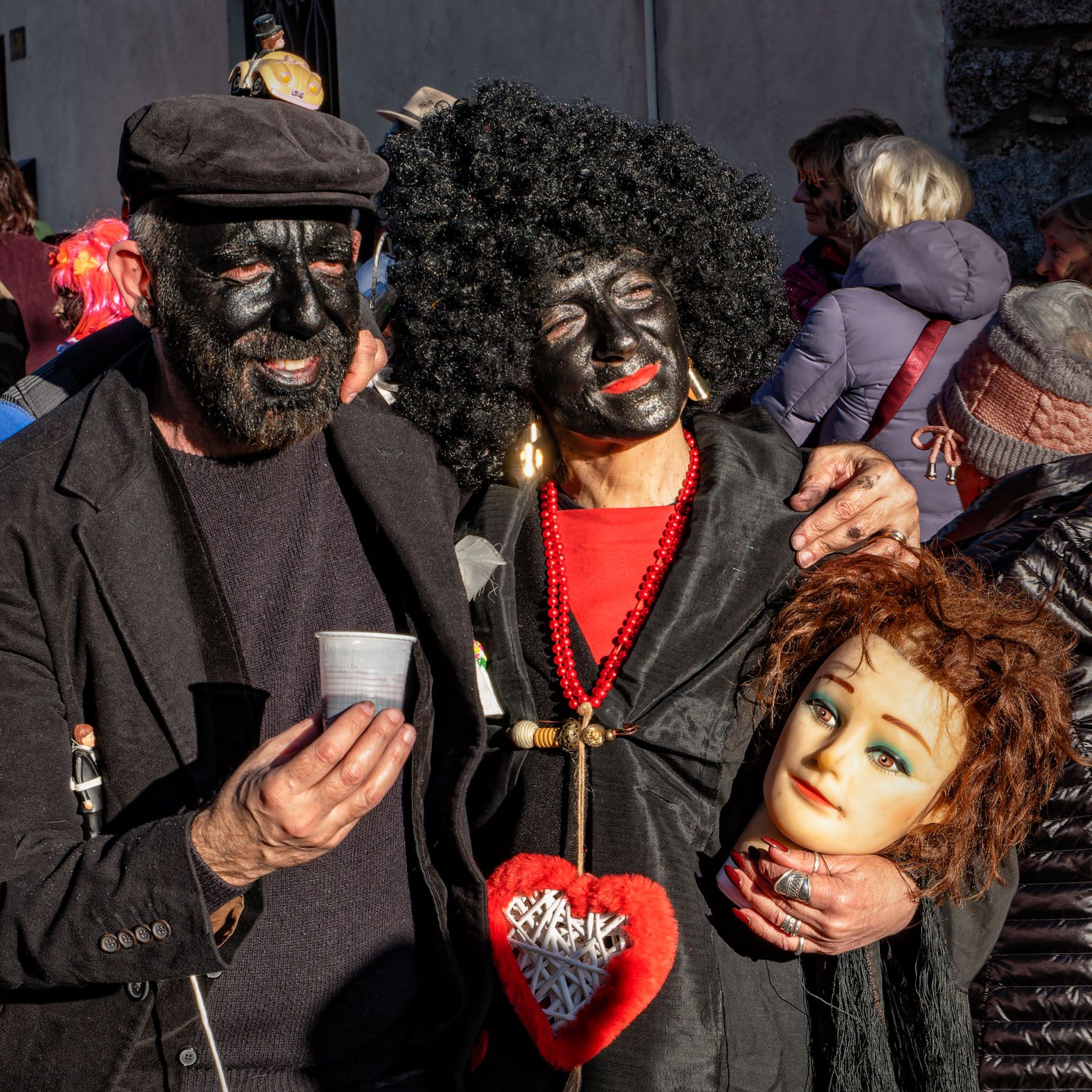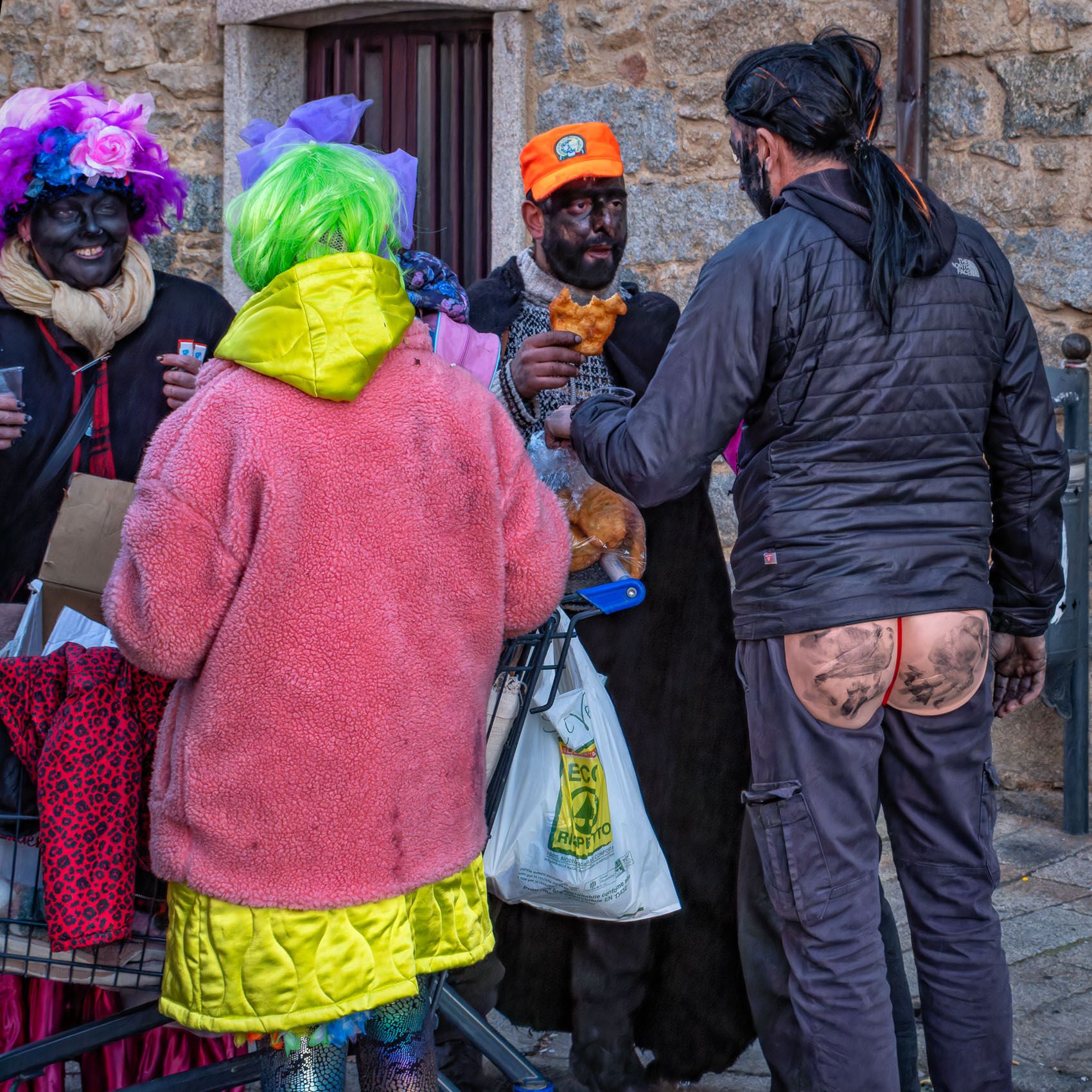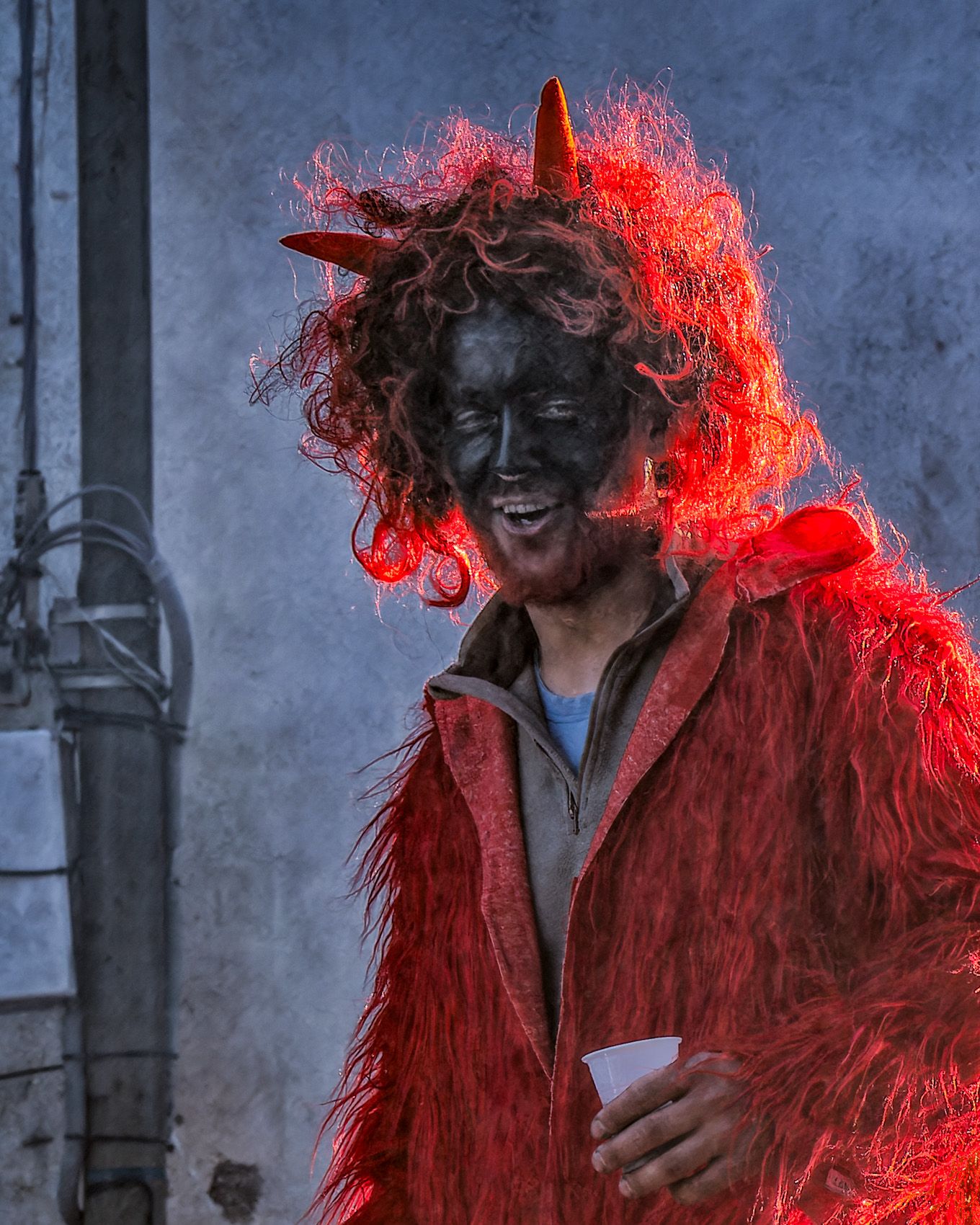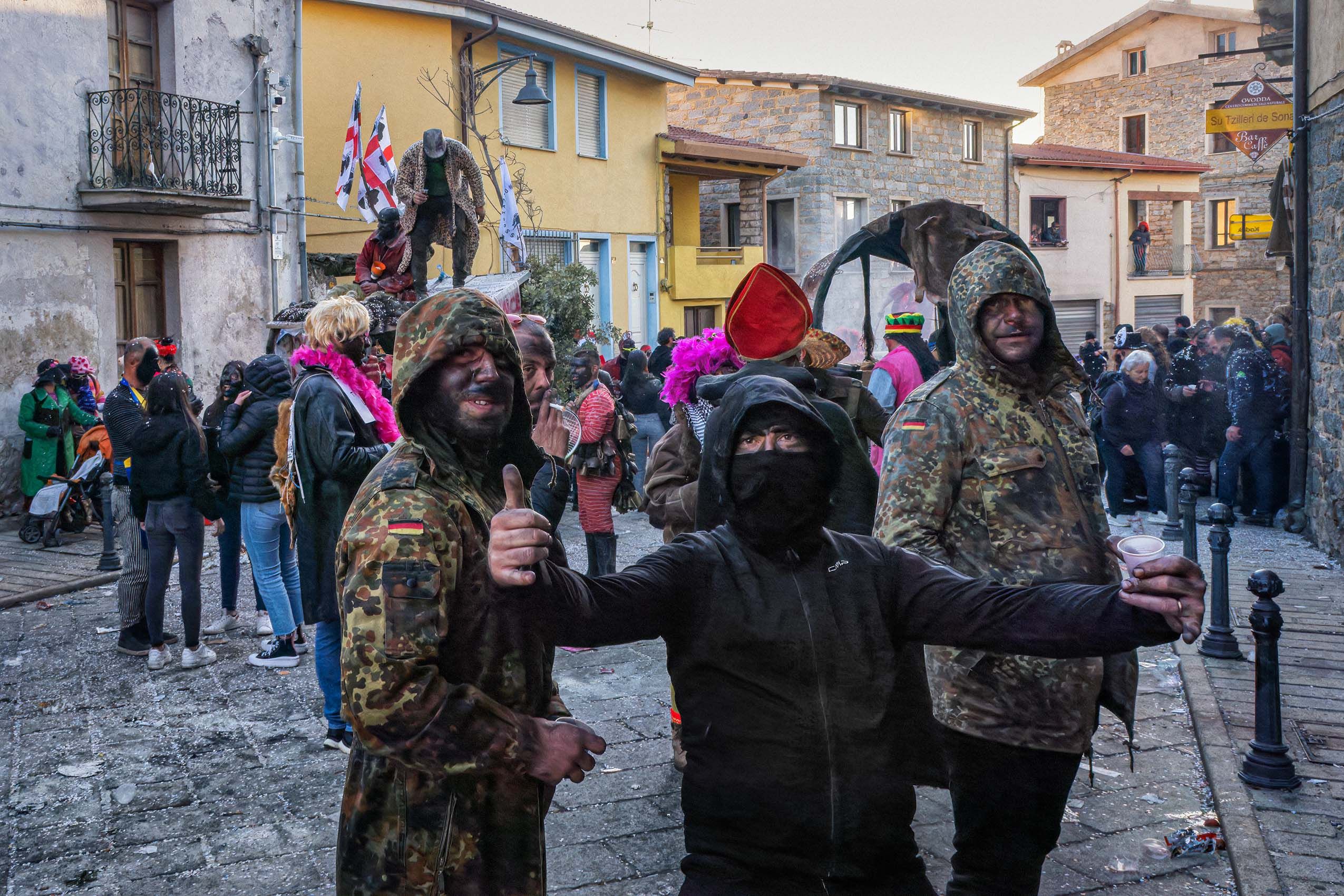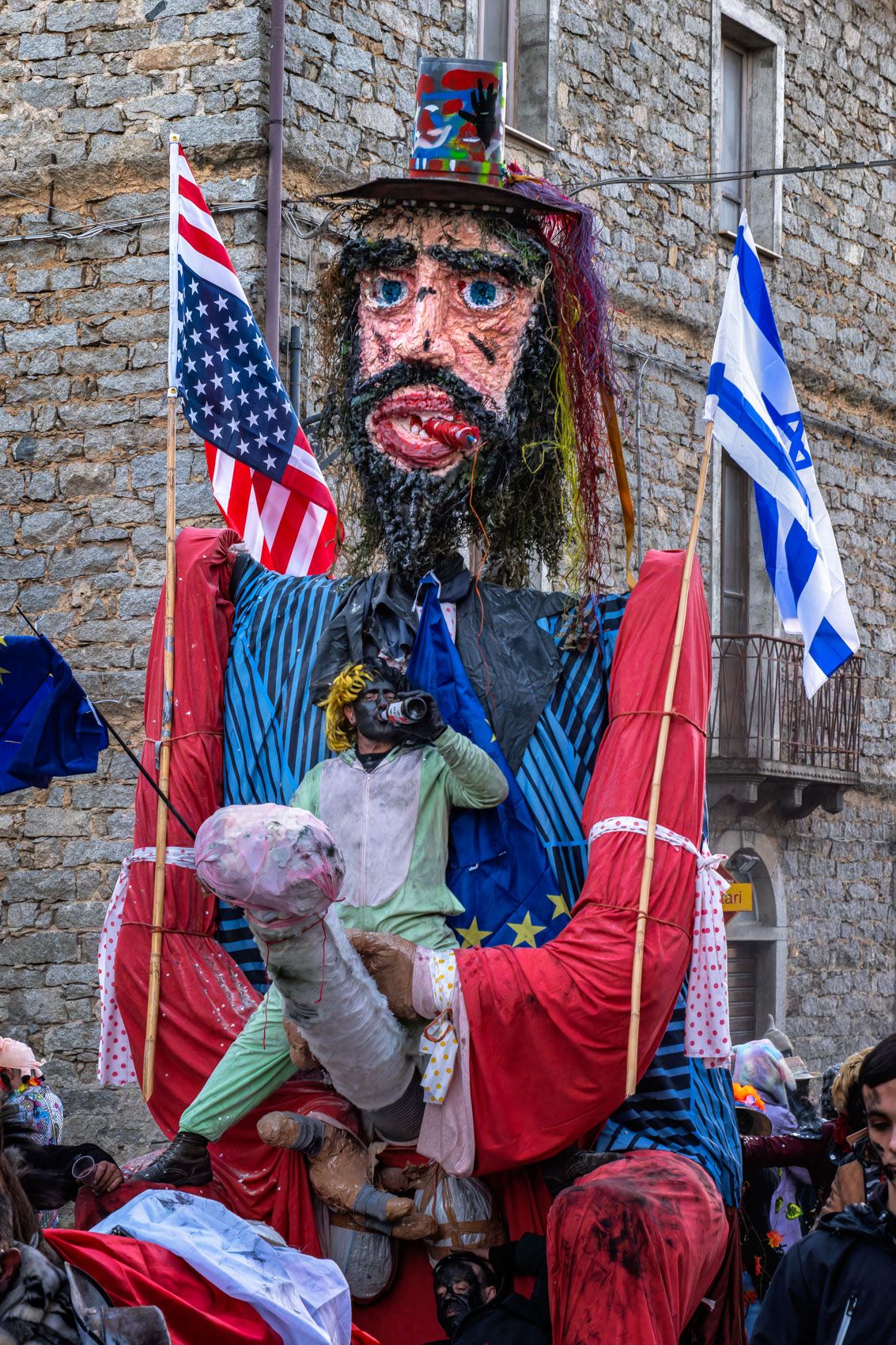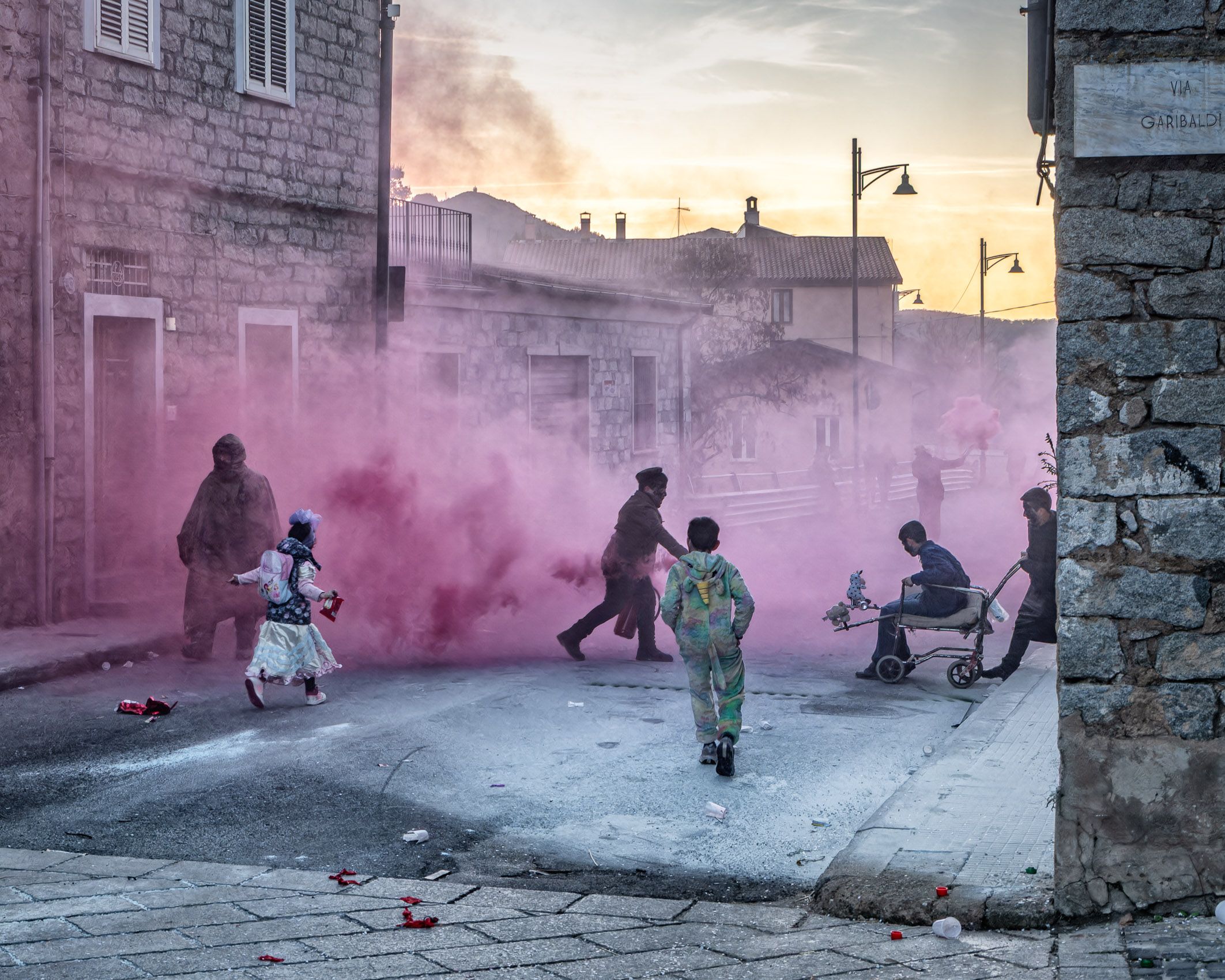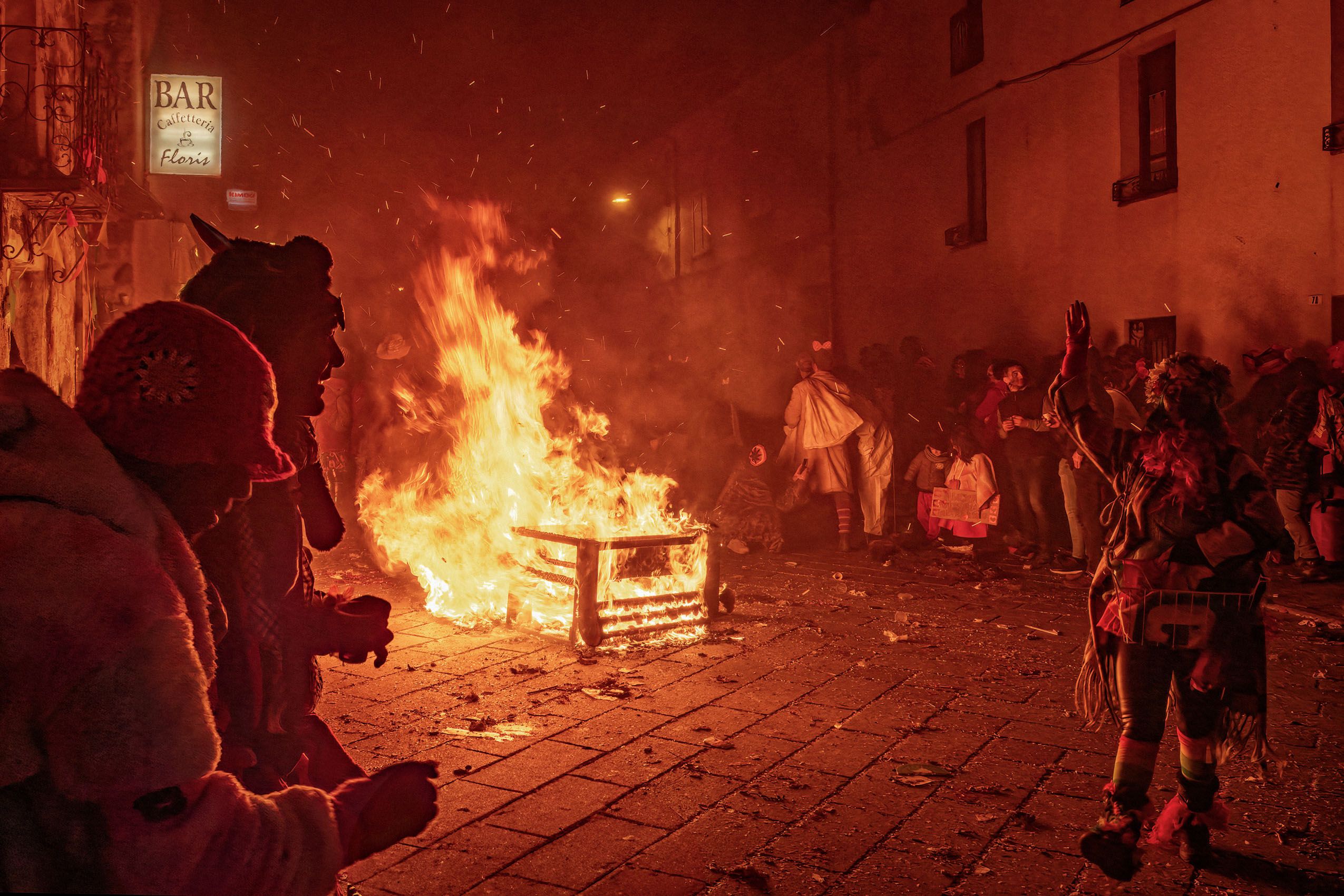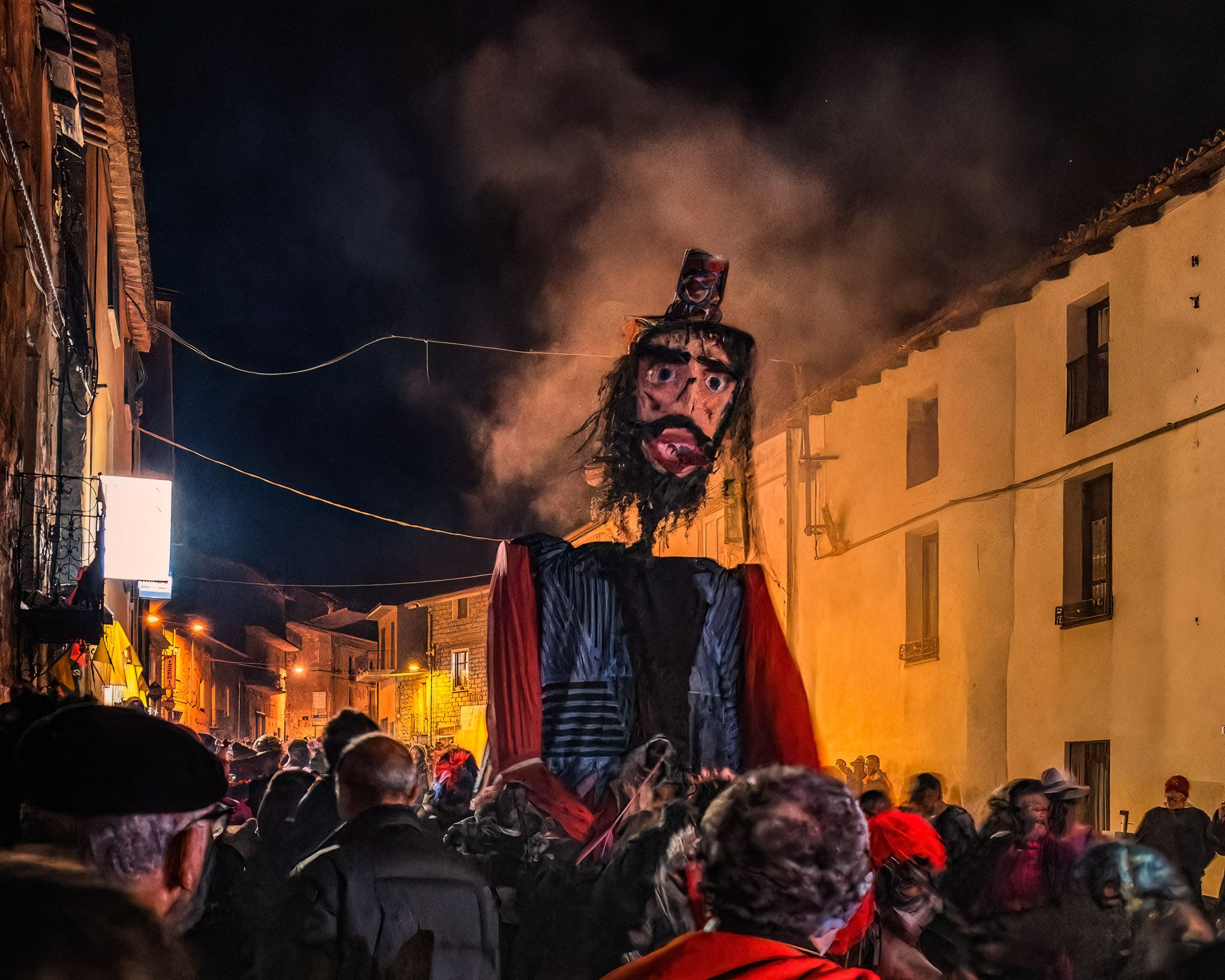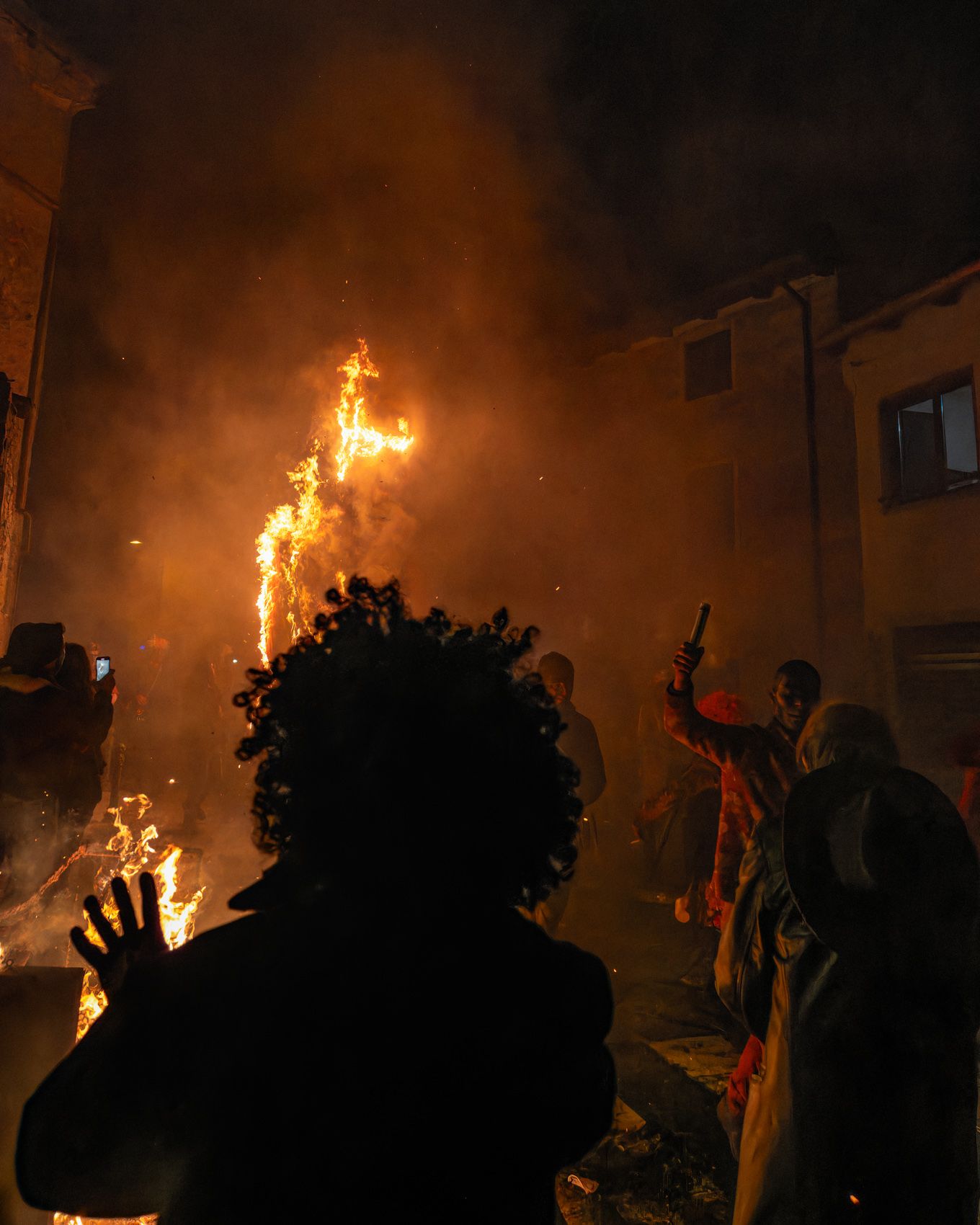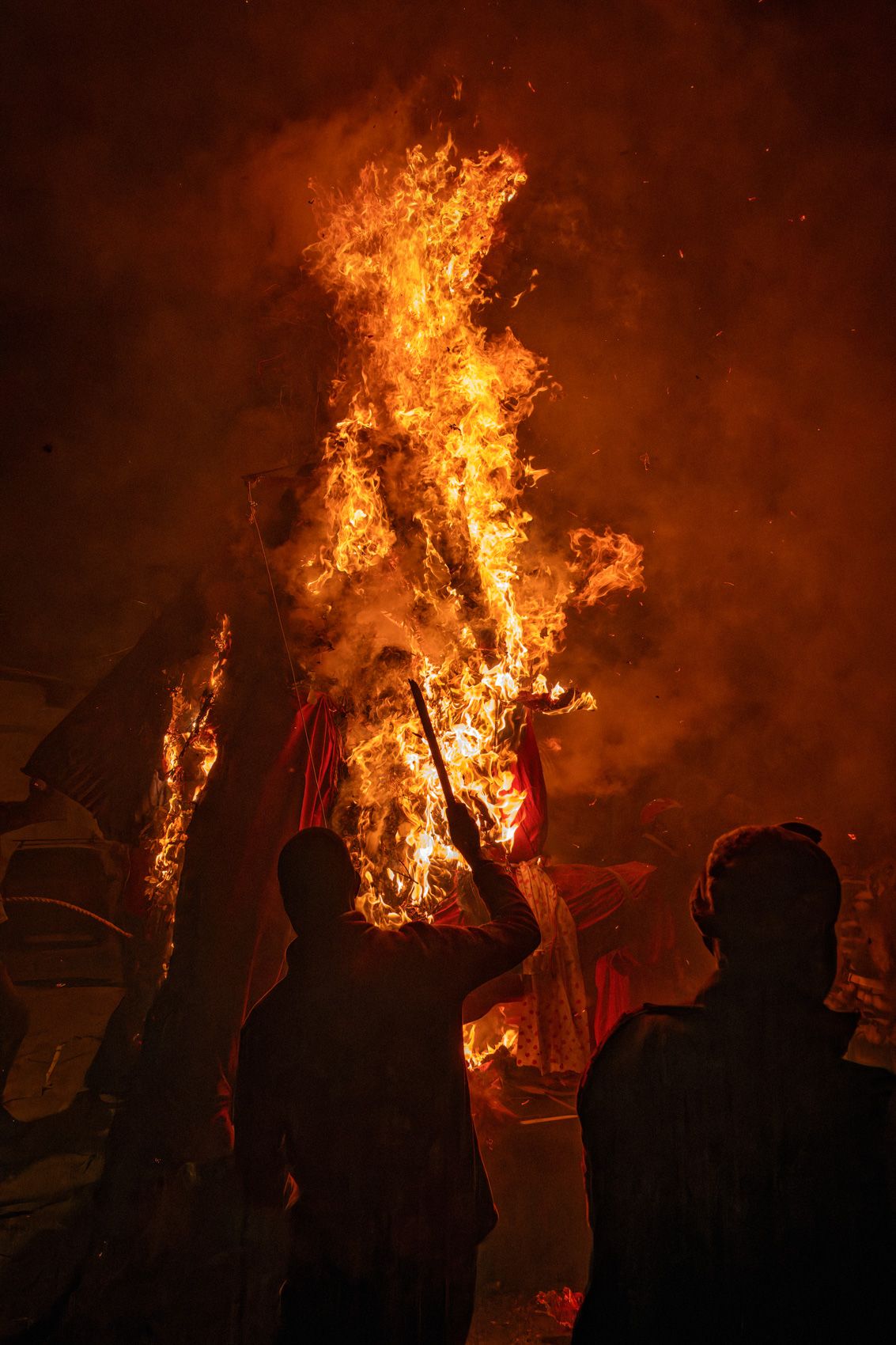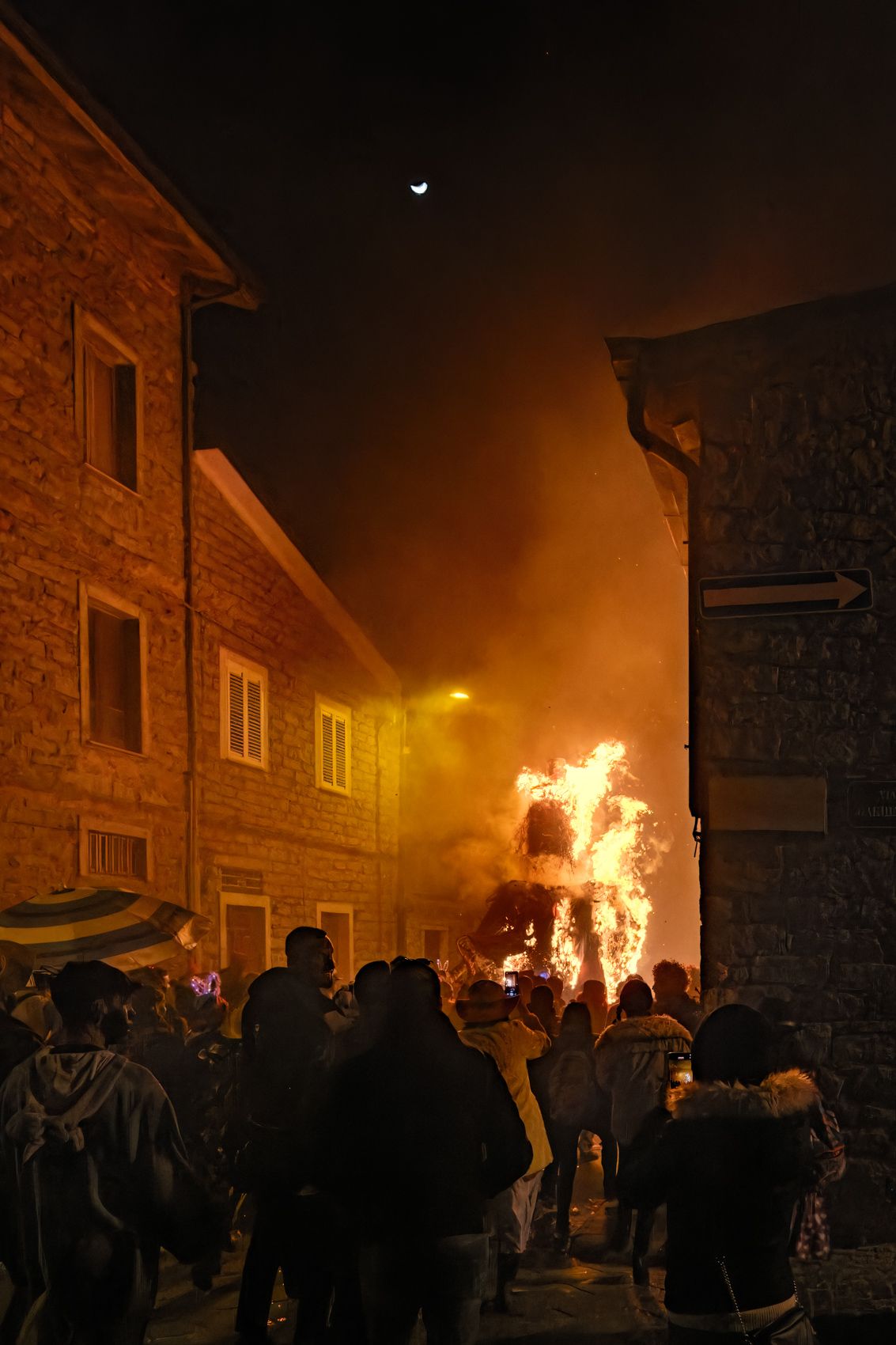SARDINIA: Carrasecare—The Culture of Carnival in Barbagia
Carnival is the quintessential European festival—its many variants well documented for centuries across the continent and, as a consequence of colonialism, spun into further hybrid forms in Latin America and West Africa. The generally accepted etymology of the festival is from the Latin, carnem levare, to put aside or abstain from eating meat; and since at least the late middle ages, carnival has been conceived of as a circumscribed time of feasting and license that immediately precedes the Lenten period of fasting and penance that leads up to Easter. Yet while Lent has held a place in the Church calendar since the earliest centuries of Christianity, carnival has never had an officially sanctioned status in either Catholicism or Protestantism. Carnival activities are documented in Rome from as early as 1140, but the sources of carnival there and elsewhere clearly predate the advent of Christianity. Scholarship has long recognised affinities between carnival forms and festivals of importance in ancient pagan Rome, such as Saturnalia, Lupercalia and Mamuralia—festivals focused on ritual renewal, purification, and fertility, and involving masking and sacrifice. Among present-day carnival cultures in Europe, Sardinia’s is particularly evocative of those earlier, pre-Christian festivals. This is perhaps most striking in Sardinia’s distinctive indigenous term for carnival: su carrasecare. The Sardu word carrasecare is a compound of two elements: carra is associated with "meat" or "flesh," while secare signifies"to cut or tear" or "to sever." Thus, the literal meaning of the Sardu carrasecare is "the tearing of the flesh”—a phrase suggestive of ritual blood sacrifice, and quite distinct from the accepted etymology of the Italian carnevale.
The writings of rural Sardinia’s local amateur historians and the promotional copy of tour companies make much of carrasecare as the living embodiment of an ancient pagan fertility cult. In ancient Greece and the Near East, the annual renewal of the natural cycle embodied in the death and resurrection of Adonis, Dionysos and other so-called “dying gods” was enacted in ecstatic and sacrificial rites. The local popular understanding is that these cults were introduced into Sardinia in the course of millenia old migrations; and that their traces have survived up to the present in the local festivals held in late winter in the still relatively remote inland mountain villages. While expert academic historians and anthropologists have remained skeptical or outright dismissive of such popular theorizing, it is nevertheless well established that the Nuragic culture that flowered in Sardinia during the Bronze Age had significant contacts with the Mycenean culture of the eastern Mediterranean and that the island was subsequently colonized by the Phoenicians and Romans. Furthermore, intriguing support has recently emerged from genomic analyses of living Sardinians, suggesting that Nuragic culture itself arose subsequent to migration and settlement of Sardinia by early Neolithic farmers from the Near East and Anatolia some 7500 years ago.
Early continental travellers to Sardinia remarked both upon the wildness and backwardness of its peasants and their authentic preservation of ancient practices. Today’s global tourist industry continues to evoke such tropes in its pitch for Sardinian carnival tours. Is it true, then, as local promoters and tour companies would have us believe, that if we venture into the Sardinian hinterlands in February we will be able to experience first hand pagan rituals still performed as they have been for millennia? Of course not. Cultural forms may sometimes evolve slowly but their meanings and functions are in a constant state of historical flux and adaption to changing circumstances. Despite the persistence of recognisable formal elements from earlier festivals, today’s Sardinian village carnivals are not and could not be the same as they were even a few decades ago—let alone a few millennia ago. In fact, many of them did not exist a few decades ago but are rather recently imagined traditions in service of contemporary circumstances and needs.
By the post World War II period, in Sardinia as on the European mainland, traditional village festivals had largely fallen into oblivion, victims not only of wartime deprivation and dislocation but of the postwar spread of commercial mass culture in the West and repressive Communist party policies in the East. However, since at least the 1980s public festivals have been experiencing a veritable renaissance across Europe. This is also true in Sardinia, where a number of today’s most notable carnivals were established or revived starting around that time. However, the circumstances in which carnival is now performed are fundamentally different from those of earlier times; and it was precisely as a manifestation of and response to profound postwar changes that carnival was reinvented in Sardinia as elsewhere. The subsistence agro-pastoral economy that had been the fundamental way of life for most Sardinians from time immemorial had permanently contracted, and farming was now thoroughly commercialized and mechanized. Increased local industrialization and wage labor, and the social and cultural as well as the economic dislocations of globalization severed the link to the traditional agrarian cycle that was the ritual substructure of carresecare. As a consequence of increasing economic migration of Sardinians to the Italian mainland and beyond, depopulation had begun to threaten rural villages with extinction. Its links to the agrarian cycle and the religious calendar having become profoundly attenuated, carrasecare now thrives as a defining source of local identity, solidarity and pride, and as an increasingly valuable source of tourist revenue.
In practice, this intended means of sustaining traditional village culture and society is also the unintended means of changing them. Over the course of the past few decades, the process of researching, reviving and reinventing local traditions has become increasingly organized, bureaucratized, and commercialized. Many villages have established official committees, websites, and publications to standardize and promote their carnivals; legal means have been sought to, in effect, copyright specific carnival features, to protect local brands from neighboring competition; outside funding is sometimes sought from government entities or commercial enterprises to underwrite, expand and professionalize the events; the imprimatur of regional and international organizations is coveted to certify their cultural authenticity. In many villlages, what was once a festive ritual in which the whole community participated has now largely become a performance for visiting spectators—no longer the cultural manifestation of an agro-pastoral subsistence economy but a cultural product of consumer capitalism. Thus, the means to enhance the cultural prestige of local traditions in order to strengthen collective identity gradually erodes what it seeks to preserve. And while village tourism is often motivated by the desire of contemporary urbanites to experience cultural “authenticity,” the very presence and participation of tourists undermines the authenticity they seek. This is not meant as a repudiation of today’s Sardinian carnival for being “inauthentic” but rather to suggest that its authenticity resides precisely in its embodiment of the unstable conjuncture between tradtional forms and contemporary pressures, between the past and the present. If the tension between global and local forces at play in contemporary carnival creates an irresolvable paradox for locals and visitors alike, then carnival is true to its time and place.
Sardinia has always been isolated from mainland Italy, not only by geography but also by language and culture. Sardinia has been Italian only since 1861, when the Kingdom of Italy was established. For most of the previous several centuries, it was largely subject to Spanish control or influence. It is today one of only five autonomous regions within the Italian state, with a degree of legislative, administrative, and financial independence. Its politics are dominated by the center/left, and among its many political parties are several with regional and Sardinian nationalist orientations. The human population is about one and a half million and shrinking, while the sheep population is more than double that and constitutes one of the highest densities in the world. The villages of the rugged interior where carrasecare is performed have always been and remain today among the most remote and isolated settlements in all of Europe. This area has long been known as Barbagia. It long resisted Roman conquest, and subsequent Christian conversion and Spanish colonization; well into the twentieth century it had a reputation for banditry and blood feuds. In Barbagia, the Italian mainland remains today geographically remote and culturally alien.
As a prelude to carresecare, this portfolio opens with images of three enduring aspects of the landscape: the nuraghe, round stone towers more than three millennia old, remnants of Sardinia’s unique Nuragic civilization, of which more than 7000 remain scattered around the island; the ubiquitous sheep, which have been bred here for millennia and whose provision of meat and milk, wool and hides, remain essential to the economy and diet of Barbagia; vines for the wines that are made by almost every farmer for home consumption as well as by commercial wineries, and which in prodigious quantities fuel the festivities of carresecare. The next four images are of murals from the streets of the village of Orgosolo. Formerly notorious for its banditry, Orgosolo is now famous not for a carnival but for its public art. The tradition of mural painting in Orgosolo began in the late 1960s and early 1970s, a period marked by widespread social upheaval and political movements across Europe and beyond. The first works were inspired by the Italian student protests and worker movements of the time, and expressed dissent against social injustice, economic exploitation, and political repression. Murals added in the 1970s and 1980s were not just political statements but also reflections of Sardinia’s unique cultural identity, portraying scenes of rural life, local traditions, and the ongoing struggle for Sardinian autonomy. The village has today become a living art gallery and tourist destination, its work varied in style but unified by a commitment to social commentary. Political and historical themes dominate, with many works addressing global and local struggles for justice, freedom, and equality. Despite the relative isolation of Barbagia, some of those who live there seem acutely attuned to global geopolitics. More recent murals have focused on opposition to globalization and neocolonialism; anti-American sentiment is conspicuous.
The rest of the images are of carnival as performed and experienced in four villages of Barbagia. Despite their relative proximity in place and occasion, each of these festivals is remarkably distinctive. In order of appearance, they are Sos Tumbarinos in Gavoi, Su Battileddu in Lula, Mamuthones e Issohadores in Mamoiada, and Don Conte in Ovodda. (There are many others, but these are the ones I was lucky enough to experience.)
In Gavoi, local drums traditionally made from sheep or goat skins stretched over wooden frames (“tumbarinos”) take on a central role in carnival celebrations. The tumbarinos are typically accompanied by other traditional instruments, such as the “triangulu” (triangle) and the “sonazzos” (bells). Together, these instruments form the unique soundscape of the carnival, which is both immediately celebratory and deeply resonant of the the agro-pastoral traditions of the region. During the days leading up to the austerities of Lent, the narrow streets of the village are filled with music, singing, dancing, eating and drinking. Many participants wear traditional Sardinian costumes during the festival, which adds a rich layer of cultural expression to the event. The costumes, often made of wool and featuring intricate embroidery, reflect the island’s long history of craftsmanship and textile production. The wearing of traditional dress during the carnival is a way for the people of Gavoi to honor their ancestors and maintain a tangible connection to their cultural heritage. Unlike some carnivals that follow a set program or parade structure, the celebrations in Gavoi are spontaneous and unstructured. Groups of drummers and musicians wander through the streets, gathering in small clusters and then dispersing, creating a dynamic and ever-changing experience. Sos tumbarinos remains today an inclusive communal happening—an extended village party rather than another stop on the tourist carnival circuit.
Carnival traditions across Sardinia are known for their deep-rooted ties to ancient rituals, pastoral life, and the cyclical nature of existence. Among the most solemn and evocative of these is the carnival in the village of Lula, which features a central figure known as "Su Battileddu." This character, unlike the jovial or festive figures found in many other European carnival traditions, embodies death and rebirth—an incarnation of the struggles, sufferings, and eventual renewal that define human existence and all of nature. Lula’s carnival invites participants and spectators to confront life's most primal realities, using Su Battileddu as a metaphorical bridge between the world of the living and the dead. The scenario of su Battileddu harkens back to ancient fertility rites in which a scapegoat—an animal or human figure—was offered to the gods in exchange for the promise of renewed fertility in the land. The character is performed by a man dressed in ragged clothes, smeared with black soot, covered in animal skins, with goat horns on his head and freshly gutted billy goat entrails dripping blood tied around his middle. Throughout the carnival, Su Battileddu is pursued by a group of figures masked or with blackened faces, sometimes wearing bells or animal skins and bearing whips, who torment him; another group, dressed as widows, grieve for the victim and sing sos attittos, the age old Sardo laments for the dead. The laments are mixed with obscenities and the torments are mixed with clowning. Su Battileddu is pursued from place to place in the village, and is eventually captured. His captors violently strike him and simulate his death. This enactment of ritual sacrifice is the climax of the carnival. Su Battileddu is the scapegoat, bearing the sins, burdens, and misfortunes of the past year for the community. His death symbolizes the end of winter, the harshest and most challenging season for an agrarian society, and the hope for spring’s rebirth and a prosperous new year. In a world increasingly disconnected from the cycles of nature, Lula’s carnival is a powerful reminder of the community’s deep ties to its agrarian past and its ongoing relationship with the land. The license and temporary release of tensions characteristic of carnival are tangible here. Outsiders who have come to see the event have their faces sometimes forcibly smeared with soot upon entering the village, and may even be subject to a bit of whipping around the legs by inebriated local youths. Su Battileddu, as the embodiment of death and rebirth, is not just a figure in a parade; he is a manifestation of the collective consciousness of the village, representing the fears, hopes, and resilience of the people of Lula.
Perhaps the most famous of Barbagia’s carnivals is that of Mamoiada, distinguished by the presence of two iconic figures: the "Mamuthones" and the "Issohadores." The Mamuthones are perhaps the most recognizable and enigmatic figures in all of Sardinian carnival. Dressed in black sheepskin vests and dark wooden masks with impassive, solemn expressions, they carry heavy cowbells (*sonaggias*) strapped to their backs, which ring as they process through the town in a slow and solemn dance. Their appearance is stark and primeval, evoking the image of beasts or spirits from another world. The Issohadores, on the other hand, are brightly dressed, with white masks and shirts, red jackets and sashes. Their role in the carnival is more dynamic and interactive than that of the Mamuthones. As they move through the crowd, the Issohadores carry long ropes, or “sohas,” which they use to lasso onlookers, especially young women. Being caught by an Issohadore is considered a sign of good luck, symbolizing fertility and protection. The interplay of the Mamuthones and Issohadores is said to have ancient origins, possibly dating back to pre-Roman times, though its precise meaning remains the subject of much speculation. Some view the Mamuthones as representations of the spirits of the dead, invoking ancestral forces to protect the community and its agricultural fortunes. Others see them, with their heavy bells and sheepskin costumes, as embodiments of the cyclical relationship between humans, livestock, and the earth. Their silent, solemn procession through the streets is at root a ritual designed to ensure fertility and prosperity for the coming year. The Issohadores are believed to represent order and control, balancing the chaotic, otherworldly presence of the Mamuthones. They act as intermediaries between the community and the forces of nature or the supernatural, using their lassoing ritual to bind the people together and ensure the community’s collective continuity and well-being. The interplay of Mamuthones and Issohadores embodies the dual nature of the carnival, in which chaos and order, life and death, are held in a delicate balance.
As environmental concerns grow and traditional ways of life come under threat, the carnival’s themes of nature, renewal, and community have gained fresh relevance. The emphasis on the connection between humans and the land, as well as the ritual protection of the community, resonates with modern efforts to preserve cultural heritage and promote sustainable practices. The Mamoiada carnival has the highest profile of any in Barbagia, and is assiduously promoted by the village and the state. As two of the images here reveal, during my visit there were also guest groups from the Balkans performing their own UNESCO recognized carnival traditions in the streets of Mamoiada. Thus contemporary Mamoiada affirms its place in a pan-European cultural tradition.
The carnival in Ovodda is perhaps the most chaotic in Barbagia. A key feature of the Ovodda carnival is that it takes place on Ash Wednesday, the first day of Lent and traditionally a solemn day of repentance and fasting in the Christian calendar. The event defies the conventional timing of carnivals, which typically end by Shrove Tuesday, and it is hard not to see this as a collective act of defiance against ecclesiastical authority. Known for its wild, unrestrained nature, the Carnival of Ovodda embodies the rebellious spirit that has characterized the region throughout recorded history. The use of soot, smeared on the faces of participants, is a hallmark of the Ovodda carnival and represents a kind of social leveling in which individual identities are obscured and the entire community engages in a collective experience. My greeting upon entering town in the morning was to have my face blackened and my head covered with a bucket that was repeated struck with a large stick. The costumes are typically outlandish or ragged; some wear animal hides. Billy goats and donkeys are conspicuous if reluctant participants. Many locals were already drunk when I arrived, and the drinking by all continued unabated well into the night. As is common in most carnivals, indulgence and excess are encouraged, reinforcing the themes of abundance and reversal that characterize pre-Lenten celebrations, and contrasting with the austerity of the fasting period to come. Noxious colored smoke is pumped into the streets by small tractors; and as it grows dark, bonfires are lit in the streets and old clothing and furniture are burned. Throughout Europe, carnival is associated with temporary license, the inversion or suspension of social norms and constraints, a temporary turning of the world upside down. In Ovodda, this subversion is especially pronounced.
Despite the chaos, certain recurring elements give the carnival its character and structure. The central figure is Don Conte, a large and grotesque effigy traditionally representing a wealthy or powerful local figure. As in Orgosolo, local sources of oppression have more recently become globalized. The year I was there, Don Conte was realized as a monstrous caricature of Uncle Sam, outfitted with a giant penis and flanked by inverted American and Israeli flags. Throughout the day, Don Conte is carried through the streets on a cart, subjected to jeers and insults from the crowd, who pelt him with flour, eggs, and other objects. This ritual humiliation serves as a form of symbolic revenge against authority, wealth, and the exploitative social order. It is a cathartic act, allowing the community to mock and temporarily overthrow those in power. As the night wears on, the carnival reaches its climax with the setting alight of Don Conte and the driving of his flaming remains out of town accompanied by the cheering crowd. The finale is to push his cart over the edge and into a ravine. Despite its seemingly anarchic nature, the carnival is deeply rooted in tradition and ritual. Unlike some other carnivals, which have become commercialized or standardized, Ovodda’s carnival retains its authenticity, resisting the pressures of tourism. Its spontaneous, grassroots nature makes it a uniquely powerful experience for those who participate, offering a glimpse into the deeply rooted spirit of Barbagia and its people.

